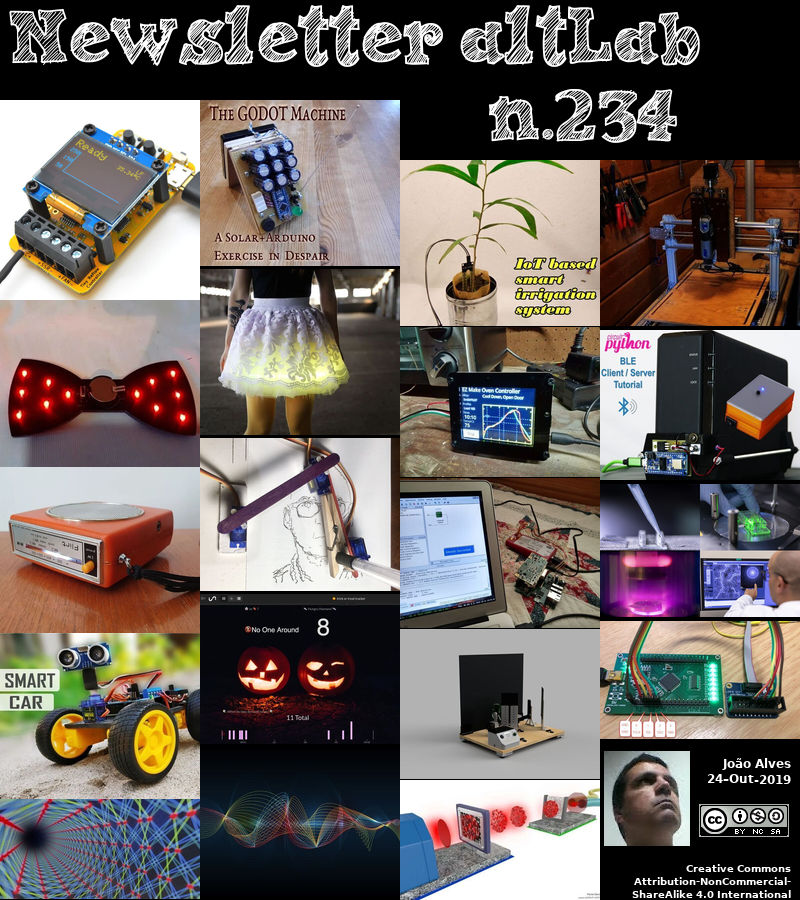2019-10-24 - Nº 234
Editorial
Esta é a Newsletter Nº 234 que se apresenta com o mesmo formato que as anteriores. Se gostar da Newsletter partilhe-a!
Todas as Newsletters encontram-se indexadas no link.
Esta Newsletter tem os seguintes tópicos:
Faz hoje anos que nascia, em 1804, Wilhelm Eduard Weber. Este Físico alemão investigou o magnetismo terrestre. Durante seis anos, Weber trabalhou em estreita colaboração com Carl Gauss. Weber desenvolveu magnetómetros sensíveis, um telégrafo electromagnético (1833) e outros instrumentos magnéticos durante esse período. O seu trabalho posterior sobre a razão entre as unidades de carga electrodinâmicas e electrostáticas mostrou-se extremamente importante e foi crucial para James Clerk Maxwell na sua teoria electromagnética da luz. (Weber descobriu que a proporção era de 3,1074 x 108 m / s, mas não notou o facto de estar próxima da velocidade da luz.) Os últimos anos de Weber foram dedicados ao trabalho em electrodinâmica e na estrutura eléctrica da matéria. A unidade magnética, Weber, recebeu o nome dele.
Faz também anos hoje que nascia, em 1854, Hendrik Willem Bakhuis-Roozeboom. Este Físico holandês divulgou a regra da fase de Gibbs por toda a Europa. Tendo originalmente ouvido falar de Van der Waals, Bakhuis-Roozeboom converteu a teoria de Gibbs em prática. Enquanto Gibbs raramente experimentara, Bakhuis-Roozeboom fazia todos os tipos de medições que serviam para provar a validade da regra de fase e, além disso, elaborou os detalhes da sua aplicação a muitos casos individuais. A química moderna das ligas beneficia muito com a amplificação do entendimento da regra das fases.
Faz igualmente anos hoje que nascia, em 1873, Edmund Taylor Whittaker. Este Matemático inglês fez contribuições pioneiras para a área de funções especiais, que é de particular interesse na física matemática. Whittaker mais conhecido pelo seu trabalho em análise, em particular análise numérica, mas ele também trabalhou na mecânica celeste e na história da matemática aplicada e da física. Ele escreveu artigos sobre funções algébricas e funções automórficas. Os seus resultados em equações diferenciais parciais incluíram uma solução geral da equação de Laplace em três dimensões numa forma específica e a solução da equação de onda. No lado aplicado da matemática, ele estava interessado na teoria da relatividade e também trabalhou em teoria electromagnética.
Faz também anos hoje que nascia, em 1906, Aleksandr Osipovich Gelfond. Este Matemático russo criou técnicas básicas no estudo de números transcendentais (números que não podem ser expressos como raiz ou solução de uma equação algébrica com coeficientes racionais). Ele avançou profundamente na teoria dos números transcendentais e na teoria da interpolação e aproximação de funções variáveis complexas. Ele estabeleceu o carácter transcendental de qualquer número da forma ab, onde a é um número algébrico diferente de 0 ou 1 e b é qualquer número algébrico irracional, que agora é conhecido como teorema de Gelfond. Esta declaração resolveu sete dos 23 problemas famosos que tinham sido colocados pelo matemático alemão David Hilbert em 1900.
Faz igualmente anos hoje que nascia, em 1911 - Nathaniel Wyeth. Este Químico e inventor norte-americano criou a garrafa de plástico PET. A sua patente foi atribuída a Du Pont e descreveu essas garrafas como "úteis para engarrafar líquidos sob pressão, como bebidas gaseificadas" que tinham "excelentes propriedades de resistência, são resistentes ao impacto, e são capazes de reter líquidos sob pressões de até 100 psig ”(US No. 3.733.309, publicado em 15 de maio de 1973). Foi o primeiro plástico adequado para armazenar bebidas gaseificadas que era seguro o suficiente para atender aos requisitos de segurança alimentar. As suas outras contribuições incluem o desenvolvimento de equipamentos de processamento de polímeros, fibras têxteis sintéticas e outros produtos plásticos.
Por fim, faz anos hoje que nascia, em 1932, Pierre-Gilles de Gennes. Este físico francês recebeu o Prémio Nobel de Física de 1991 por "descobrir que métodos desenvolvidos para estudar fenómenos de ordem em sistemas simples podem ser generalizados para formas mais complexas de matéria, em particular cristais e polímeros líquidos". Ele descreveu matematicamente como, por exemplo, dipolos magnéticos, moléculas longas ou cadeias de moléculas podem, sob certas condições, formar estados ordenados e o que acontece quando eles passam de um estado ordenado para um estado desordenado. Tais mudanças de ordem ocorrem quando, por exemplo, um íman aquecido muda de um estado no qual todos os pequenos ímans atómicos são alinhados em paralelo a um estado desordenado no qual os ímans são orientados aleatoriamente.
Nesta semana que passou a NASA anunciou que ainda não conseguiu avistar a sonda Indiana que se terá despenhado na superfície da Lua. O Lunar Reconnaissance Orbiter da NASA passou pelo local de pouso da nave Vikram pela segunda vez e novamente foi incapaz de detectar o veículo. Este fazia parte da missão Chandrayaan 2 da Índia e, em 6 de Setembro, deveria aterrar suavemente na superfície da lua e iniciar duas semanas de investigações científicas, incluindo a instalação de um veículo espacial. Mas no final desse processo, a nave ficou em silêncio. A agência espacial da Índia disse que avistou a sonda logo após o suposto acidente, mas não forneceu mais detalhes.
Na Newsletter desta semana apresentamos diversos projetos de maker assim como um modelo 3D que poderá ser útil. São apresentadas as revistas Hackspace Magazine nº 24 de Novembro e a newelectronics de 10 de Outubro de 2019.
 João Alves ([email protected])
João Alves ([email protected])
O conteúdo da Newsletter encontra-se sob a licença  Creative Commons Attribution-NonCommercial-ShareAlike 4.0 International License.
Creative Commons Attribution-NonCommercial-ShareAlike 4.0 International License.
Novidades da Semana

A NASA Spacecraft Still Hasn't Spotted India's Ill-Fated Moon Lander
"NASA's Lunar Reconnaissance Orbiter has passed over the targeted landing site of India's Vikram spacecraft a second time and again has been unable to spot the vehicle. The Vikram lander was part of India's Chandrayaan 2 mission, and on Sept. 6, it was meant to touch down softly on the moon's surface and begin two weeks of science investigations, including deploying a rover. But late in that process, the spacecraft fell silent. India's space agency said that it had spotted the lander soon after the presumed crash, but hasn't provided more details. "I suspect, based on what they've said, that it could be just that we're not looking at the right place or we just can't see it because of the illumination," Noah Petro, NASA's Lunar Reconnaissance Orbiter project scientist, told Space.com. "Until we know more details about where it is, it's going to be very hard for us to find it."" [...]
Outras Notícias
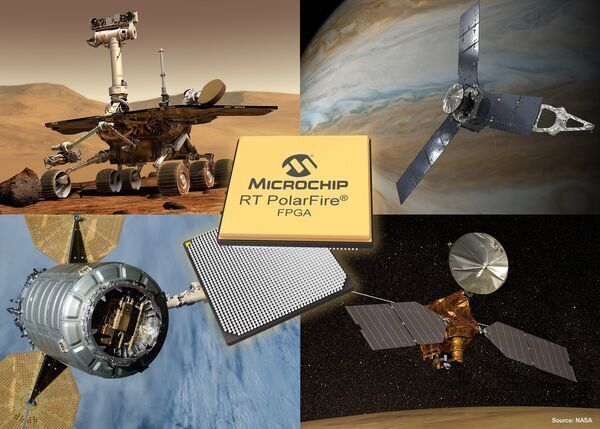
[Microchip’s Low-Power Radiation-Tolerant (RT) PolarFire FPGA Enables High-Bandwidth Space Systems with Lower Total System Cost](https://www.microchip.com/pressreleasepage/microchip-low-power-radiation-tolerant-(rt)
"Industry’s lowest-power FPGA enables high-throughput on-orbit processing systems that withstand radiation effects in space Developers of spacecraft electronics use radiation-tolerant (RT) field programmable gate arrays (FPGAs) to create on-board systems that meet the demanding performance needs of future space missions, survive the brutal launch process and continue to operate reliably in the harsh environment of space. Extending its RT FPGA offering to bring these capabilities to emerging high-performance space applications, Microchip Technology Inc. (Nasdaq: MCHP) today introduced the RT PolarFire® FPGA that is optimized to meet the most demanding requirements in spacecraft payload systems’ high-speed data paths with the lowest possible power consumption and heat generation. “We are supporting an evolving set of on-orbit space applications that need high levels of operating performance and density, low power consumption and minimal heat dissipation, while reducing system-level costs,” said Bruce Weyer, vice president of Microchip’s FPGA business unit. “Our RT PolarFire FPGA enables the major leap in computing throughput required for these applications including processing-intensive neural networks for object detection and recognition, high-resolution passive and active imaging, and high-precision remote scientific measurement, while maintaining a path to QML qualification.” A growing number of space applications need greater computational performance so they can transmit processed information rather than raw data and make optimal use of limited downlink bandwidth. The RT PolarFire FPGA enables this at significantly lower cost and with faster design cycles than possible with application-specific integrated circuits (ASICs). It also significantly reduces power as compared to the alternative of using FPGAs based on static random access memory (SRAM) while eliminating their vulnerability to radiation-induced configuration upsets." [[...]](https://www.microchip.com/pressreleasepage/microchip-low-power-radiation-tolerant-(rt)
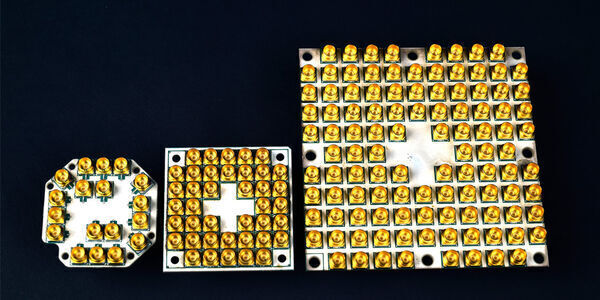
The Race to Commercially-Viable Quantum Computing Is a Marathon, Not a Sprint
"Recent Findings Should be Celebrated, but Practical Realities are the Real Test Quantum computing receives a lot of attention due to its potential to take on problems beyond the reach of today’s computers, such as new drug discovery, financial modeling and exploring how the universe works. Universities, governments and technology companies around the world are striving to achieve a commercially-viable quantum computing system. While the collective progress is real – and is getting noticed – the field is still at mile one of what will be a marathon toward quantum computing’s commercialization. That said, important milestones along this journey should be recognized, celebrated and built upon. More Promising Results As researchers at Intel and across the globe are discovering, quantum computing has the potential to tackle problems that conventional computing – even the world’s most powerful supercomputers – can’t quite handle. Today, it was confirmed that researchers from Google had demonstrated the extraordinary speed of quantum, as compared to traditional supercomputers, with a benchmark test known as “quantum supremacy.” The Google team designed an algorithm that could run an analysis in 200 seconds on a small quantum processor, a 53-qubit superconducting test chip, that would take the most powerful supercomputer approximately 10,000 years to perform." [...]

Microchip Solves Interoperability Challenges of Delivering up to 90 Watts of Power Over Ethernet Wiring
"Company’s Power over Ethernet (PoE) offering enables both pre-standard and IEEE 802.3bt-2018-compliant devices to be powered within existing Ethernet infrastructure As the industry adopts the latest generation of PoE technology for managing data and power over a single Ethernet cable, users face the challenge of making pre-standard powered devices (PDs) work alongside new IEEE® 802.3bt-2018-compliant PDs in an existing Ethernet infrastructure. Microchip Technology Inc. (Nasdaq: MCHP) has eased the transition with IEEE 802.3bt-2018-compliant PoE injectors and midspans for users and power sourcing equipment (PSE) chipsets for system developers that enable both pre-standard and IEEE-compliant PDs to receive up to 90W of power without changing switches or cabling. “As both a system and chipset supplier that has contributed to IEEE 802.3bt-2018 and all major standards leading up to it, we are ideally positioned to provide an easy migration path for meeting 30W to 90W device powering needs with plug-and-play convenience,” said Iris Shuker, PoE business unit manager with Microchip. “Combining extensive PD interoperability with firmware upgradability and more than 15 years of proven technology, our PSE chipsets offer a unique architecture that eliminates the need to redesign system boards or offer separate pre-standard and IEEE-compliant product lines. They are also at the heart of our IEEE 802.3bt-2018-compliant PoE injectors and midspans that bridge the interoperability gap for users.” Many proprietary solutions were brought to market through 2018 that support specifications such as Universal PoE (UPOE) and power over HDBaseT (PoH). They meet the higher powering needs of two-pair and four-pair PDs including kiosks, POS terminals, thin clients, 802.11ac/ax access points, small cells, smart buildings, industrial automation systems and connected LED lighting." [...]
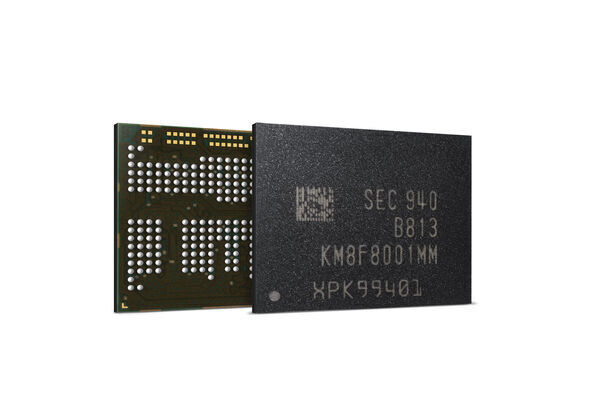
Samsung Electronics Begins Mass Production of Industry’s First 12GB LPDDR4X-based uMCP
"Utilizing the industry's first 24Gb LPDDR4X chips, this highest-capacity uMCP makes 10+ GB memory solutions available to mid-market smartphone users Samsung Electronics, a world leader in advanced memory technology, today announced that it has begun mass producing the industry’s first 12-gigabyte (GB) low-power double data rate 4X (LPDDR4X) UFS-based multichip package (uMCP). The announcement was made as part of the company’s annual Samsung Tech Day at its Device Solutions’ America headquarters in San Jose, California. “Leveraging our leading-edge 24-gigabit (Gb) LPDDR4X chips, we can offer the highest mobile DRAM capacity of 12GB not only for high-end smartphones but also for mid-range devices,” said Sewon Chun, executive vice president of Memory Marketing at Samsung Electronics. “Samsung will continue to support our smartphone-manufacturing customers with on-time development of next-generation mobile memory solutions, bringing enhanced smartphone experiences to many more users around the globe.” Samsung is introducing its 12GB uMCP solution just seven months after its launch of a 12GB LPDDRX package based on 16Gb DRAM. By combining four of the 24Gb LPDDR4X chips (featuring the latest 1y-nanometer process technology) and ultra-fast eUFS 3.0 NAND storage into a single package, the new mobile memory is able to break through the current 8GB package limit and provide 10+ GB memory to the broader smartphone market. * As the trend toward larger, higher-resolution smartphone displays continues to grow, more users will benefit from Samsung’s uMCP solution when running data-intensive tasks or multitasking." [...]
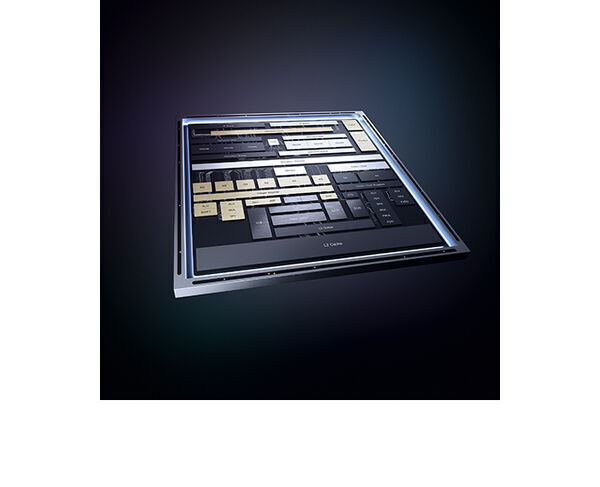
Intel Introduces Tremont Microarchitecture
"Today at the Linley Fall Processor Conference in Santa Clara, Calif., Intel revealed the first architectural details related to Tremont. Intel’s newest and most advanced low-power x86 CPU architecture, Tremont offers a significant performance boost over prior generations. “Tremont is Intel’s most advanced low-power x86 architecture to date. We focused on a range of modern, complex workloads, while considering networking, client, browser and battery so that we could raise performance efficiently across the board. It is a world-class CPU architecture designed for enhanced processing power in compact, low-power packages.” –Stephen Robinson, Intel Tremont Chief Architect Why It Matters: Tremont next-generation low-power x86 microarchitecture delivers significant IPC (instructions per cycle) gains gen-over-gen compared with Intel’s prior low-power x86 architectures. Designed for enhanced processing power in compact, low-power packages, Tremont-based processors will enable a new generation of innovative form factors for client devices, creative applications for the internet of things (IoT), efficient data center products and more." [...]

New Selfie Shows Curiosity, the Mars Chemist
"A new selfie taken by NASA's Curiosity Mars rover is breathtaking, but it's especially meaningful for the mission's team: Stitched together from 57 individual images taken by a camera on the end of Curiosity's robotic arm, the panorama also commemorates only the second time the rover has performed a special chemistry experiment. The selfie was taken on Oct. 11, 2019 (Sol 2,553) in a location named "Glen Etive" (pronounced "glen EH-tiv"), which is part of the "clay-bearing unit," a region the team has eagerly awaited reaching since before Curiosity launched. Visible in the left foreground are two holes Curiosity drilled named "Glen Etive 1" (right) and "Glen Etive 2" (left) by the science team. The rover can analyze the chemical composition of rock samples by powderizing them with the drill, then dropping the samples into a portable lab in its belly called Sample Analysis at Mars (SAM). About 984 feet (300 meters) behind the rover is Vera Rubin Ridge, which Curiosity departed nearly a year ago. Beyond the ridge, you can see the floor of Gale Crater and the crater's northern rim." [...]
Ciência e Tecnologia

Weaving Quantum Processors out of Laser Light
"Researchers open a new avenue to quantum computing with a breakthrough prototype: a large-scale quantum processor made entirely of light. An international team of scientists from Australia, Japan and the United States has produced the prototype, based on a design 10 years in the making. Quantum computers promise fast solutions to hard problems, but they need a large number of quantum components and must be relatively error free. Current quantum processors are small and prone to errors. The new design provides an alternative solution, using light, to reach the scale needed to eventually outperform classical computers. The new research, published in Science, produced a quantum processor made of laser light that has built-in scalability, allowing the number of quantum components to scale to extreme numbers." [...]
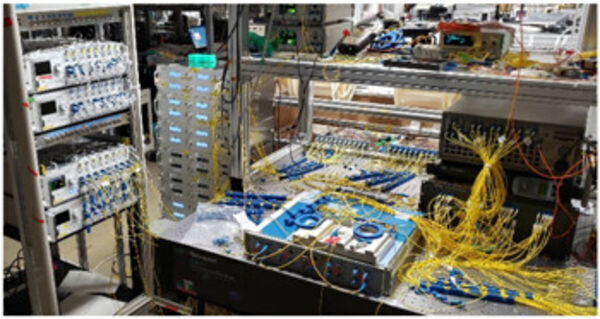
First Demonstration of a 1 Petabit per Second Network Node
"Gathering the latest advancements in optical fiber telecommunications technology towards practical petabit-class backbone networks The Network System Research Institute at the National Institute of Information and Communications Technology (NICT, President: Hideyuki Tokuda, Ph.D.) has developed and demonstrated the first large-scale optical switching testbed capable of handling 1 Petabit per second optical signals. 1 Petabit per second is equivalent to the capacity to send 8K video to 10 million people simultaneously. This demonstration made use of state-of-the-art large-scale and low-loss optical switches based on MEMS technology, three types of next-generation spatial-division multiplexing fibers, and included the routing of signals with capacities from 10 Terabit per second to 1 Petabit per second. This corresponds to more than 100 times the capacity of currently available networks. This is a major step forward towards the early implementation of the petabit-class backbone optical networks capable of supporting the increasing requirements of internet services such as broadband video streaming, 5G mobile networks or Internet of Things. As such, the results of this demonstration were acknowledged by the scientific community with a post-deadline presentation at the 45th European Conference on Optical Communication (ECOC 2019)." [...]
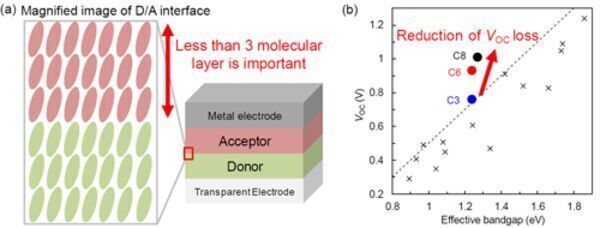
Reducing open-circuit voltage loss in organic solar cells
"Researchers at Institute for Molecular Science in Japan report that organic solar cells (OSCs) with high mobility and highly crystalline donor (D) and acceptor (A) materials were able to reduce an open-circuit voltage (VOC) loss. The origin of the high VOC was that the highly crystalline D/A interface reduced the energy loss related to charge recombination. The results demonstrate that careful design of the D/A interface enables high power conversion efficiencies in OSCs. The power conversion efficiencies of organic solar cells (OSCs) based on blends of electron donor (D) and acceptor (A) semiconducting materials now exceed 16%. However, it is still lower than that of highly efficient inorganic SCs such as GaAs. The charge generation efficiency in OSCs nowadays is nearly 100%, thus reducing the energy loss in output voltage is critically important for further enhancing the efficiency of organic solar cells." [...]
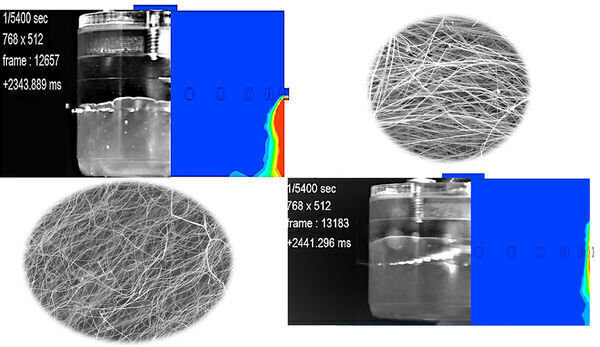
Creating Miracles with Polymeric Fibers
"“Polymers are very, very useful materials when it comes to modern applications.” Mohan Edirisinghe leads a team of researchers at University College London studying the fabrication of polymeric nanofibers and microfibers — very thin fibers made up of polymers. The group describes a study comparing fabrication techniques for these fibers without the use of electric fields in Applied Physics Reviews, from AIP Publishing. For applications ranging from scaffolding for tissue engineering and drug delivery to bacterial and viral air filtration, polymeric fibers can be woven into textilelike structures with the characteristics required for the task. Depending on the use, different fiber thicknesses may be necessary. But the ability to fabricate thin fibers with consistent characteristics is important. “When you have thinner fibers, you use lesser material, and you can weave a web — whether it’s a tissue engineering scaffold or a filtration scaffold — much better,” said Edirisinghe." [...]
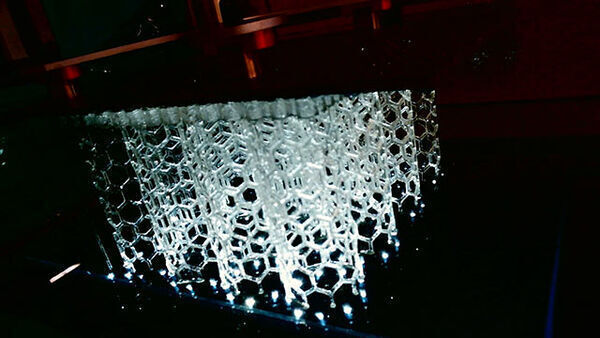
Highest-throughput 3D printer is future of manufacturing
"Rapid manufacturing on-demand could put warehouses, molds into the past Northwestern University researchers have developed a new, futuristic 3D printer that is so big and so fast it can print an object the size of an adult human in just a couple of hours. Called HARP (high-area rapid printing), the new technology enables a record-breaking throughput that can manufacture products on demand. Over the last 30 years, most efforts in 3D printing have been aimed at pushing the limits of legacy technologies. Often, the pursuit of larger parts has come at the cost of speed, throughput and resolution. With HARP technology, this compromise is unnecessary, enabling it to compete with both the resolution and throughput of traditional manufacturing techniques. The prototype HARP technology is 13-feet tall with a 2.5 square-foot print bed and can print about half a yard in an hour — a record throughput for the 3D printing field." [...]

Discovery of Ultrafast Particle Interactions Could Help Make Quantum Information Devices Feasible
"Energy is information. Lengthening the time during which a system is capable of retaining energy before losing it to the local environment is a key goal for the development of quantum information. This interval is called the “coherence time”. Several studies have been performed with the aim of retarding decoherence. A study conducted by researchers at the University of Campinas’s Gleb Wataghin Institute of Physics (IFGW-UNICAMP) in São Paulo State, Brazil, in partnership with colleagues at the University of Michigan’s Physics Department in Ann Arbor, USA, and Sungkyunkwan University’s Advanced Institute of Nanotechnology (SAINT SKKU) in Seoul, South Korea, set out to understand the decoherence process on the femtosecond (10-15 s) timescale. An article describing the results was published in Physical Review Letters." [...]
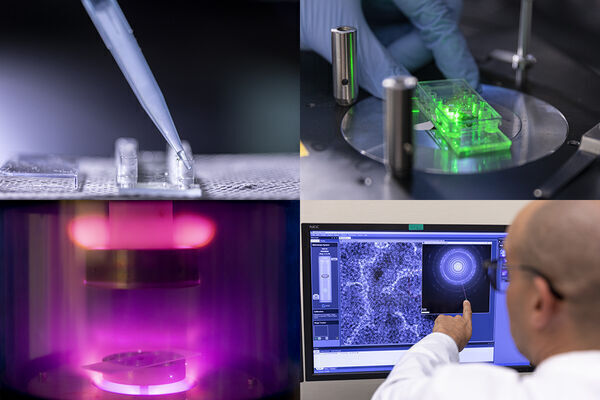
Perfect conditions for precision nanostructures
"Protein-folded DNA nanostructures offer a new building material for biotechnology. By using proteins that naturally bind and arrange DNA inside cells, a KAUST-led team has devised a plug-and-play strategy for building stable, custom-designed nanostructures. The versatile yet straightforward method for designing hybrid DNA-protein assemblages now provides engineers with a nanoscale platform for solving problems in science. “The DNA-protein nanotechnology has potential applications in many fields, including medicine, biotechnology and analytical chemistry,” says KAUST’s Professor Satoshi Habuchi, who led the study. The idea of using DNA as a kind of molecular origami dates back to the 1980s, but it was only two years ago that scientists succeeded at incorporating proteins into nanostructures. As such a nascent technology, Habuchi realized the scope for improvement, which he identified, "Demanded the finding of new building blocks for the construction of DNA-protein self-assembled nanostructures." [...]
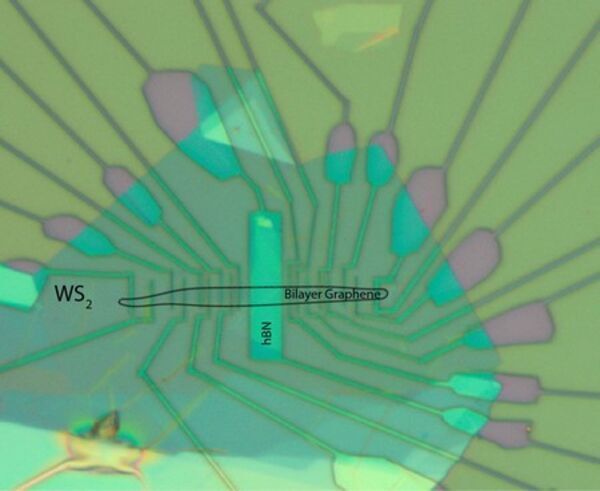
Double layer of graphene helps to control spin currents
"New type of transistor one step closer Electrons have a negative charge, but they also behave like tiny magnets. This property of electrons, called spin, can be used to transport or store information in electronic circuits. Scientists are looking for ways to create such spin-based electronics, as this is probably more energy efficient than normal electronics. University of Groningen physicist Siddhartha Omar discovered a way to transport spins over long enough distances to make such devices feasible. Furthermore, the material he used enabled him to control these spin currents. In order to make transistors that operate using the spin of electrons, rather than their charge, it is necessary to find a way of switching spin currents on and off." [...]
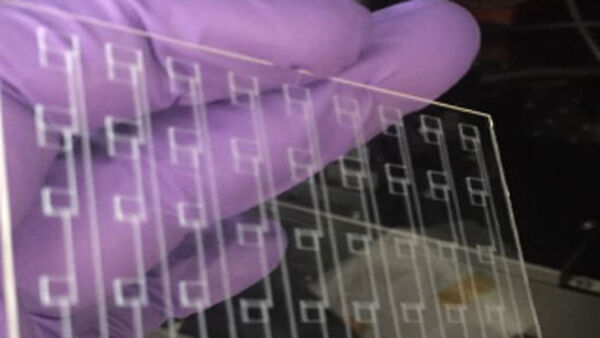
Engineers Create Fabrication Method to Improve Solar Energy Technology
"Imagine a child playing with a magnifying glass – focusing the sunlight down into a single, heated ring of light. That light is the basis of solar energy. A team of researchers led by Dr. Christi Madsen, professor in the Department of Electrical and Computer Engineering at Texas A&M University, is fabricating new solar technology. Their project, funded by the Department of Energy's Advanced Research Projects Agency-Energy, laid the groundwork for the future of solar concentrators using advanced photovoltaics (PV) cells. At the heart of solar panels are PV cells that absorb light and transform optical energy into clean electricity. Solar energy begins like a child holding a magnifying glass: With components called concentrators, the veritable magnifying glass, focusing light into a single beam." [...]
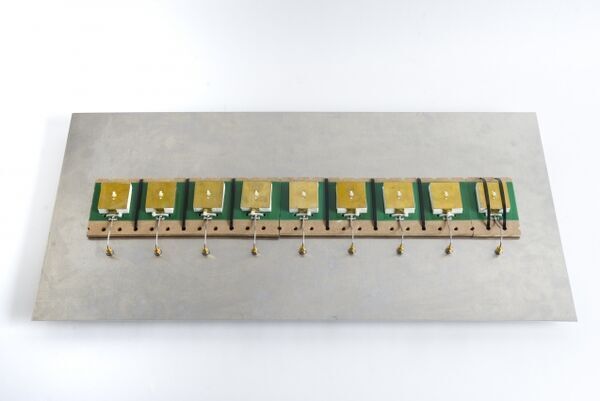
Antenna system developed at Lincoln Laboratory aims to improve wireless communications
"In-band full-duplex techniques applied to a phased-array antenna may provide a tenfold speedup in data transmit and receive rates while supporting a rapidly increasing number of wireless devices. The use of wireless devices is exploding. Statista, an international research service, estimated in March 2019 that roughly 13 billion mobile devices (e.g., phones, tablets, laptops) were in use worldwide, and Gartner, a global research and advisory firm, predicts that the internet of things will swell that number to more than 21 billion devices by the end of 2020. The widespread use of mobile devices already creates significant demand on the cellular system that supports all this wireless connectivity, especially at locations, such as an outdoor concert or a sports arena, where large numbers of users may be simultaneously connecting. The ability of current-era cellular technology, or even the proposed next-generation 5G technology, will be severely strained to provide the high data rates and wide-area communication range needed to support the escalating device usage. The communications community has been looking at in-band full-duplex (IBFD) technology to increase the capacity and the number of supported devices by allowing the devices to transmit and receive on the same frequency at the same time." [...]
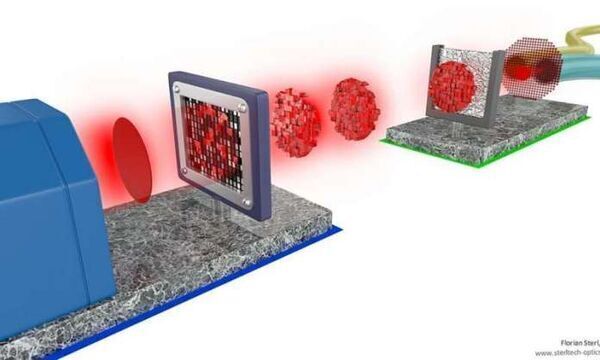
Cryptography Without Using Secret Keys
"White Paint as an Unclonable Key Most security applications, for instance access to buildings or digital signatures, use cryptographic keys that must at all costs be kept secret. That also is the weak link: who will guarantee that the key doesn’t get stolen or hacked? Using a physical unclonable key (PUK) – which can be a stroke of white paint on a surface – and the quantum properties of light, researchers of the University of Twente and Eindhoven University of Technology present a new type of data security that does away with secret keys. They present their method in the journal Quantum Science & Technology. Information security, in online banking for example, often works with a combination of a public key and a private key. The public key is known to everyone, but for creating a digital signature, a private key is necessary." [...]
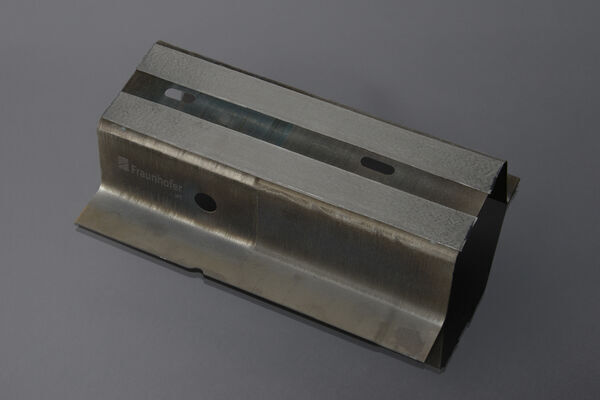
Light and strong: Hybrid lightweight components made of steel and fiber-reinforced plastics
"In recent years there has been a sharp increase in demand for lighter components for applications in mobility and transport in response to the need to save weight, and therefore energy and resources. Hybrid components made of steel, locally functionalized with fiber-reinforced plastics combine high mechanical performance with low weight. Demand for manufacturing processes conducive to cost-effective mass-production is burgeoning. In the EU research project “ComMUnion”, the two Aachen-based Fraunhofer Institutes for Production Technology IPT and for Laser Technology ILT, in collaboration with 14 partners from industry, research and academia, are developing industrial processes and solutions for hybrid lightweight design by combining metal and polymer-matrix composites for automotive and aerospace applications. The new hybrid manufacturing process is based on a combination of laser texturing and laser-assisted tape placement: For this purpose, components are first pre-processed using the laser to provide a specially developed, defined, rough surface structure. The textured surface allows the continuous fiber-reinforced thermoplastic lightweight materials, which will later be used for stiffening, to be bonded directly to the steel component." [...]
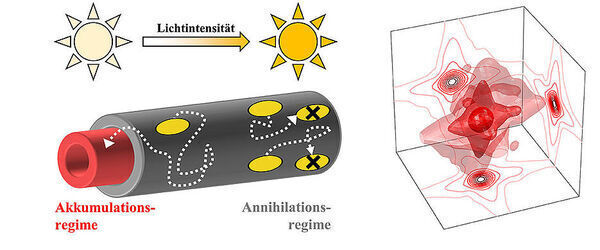
Energy Flow in the Nano Range
"It is crucial for photovoltaics and other technical applications, how efficiently energy spreads in a small volume. With new methods, the path of energy in the nanometer range can now be followed precisely. Plants and bacteria lead the way: They can capture the energy of sunlight with light-harvesting antennas and transfer it to a reaction centre. Transporting energy efficiently and in a targeted fashion in a minimum of space – this is also of interest to mankind. If scientists were to master it perfectly, they could significantly improve photovoltaics and optoelectronics. Two new spectroscopic methods But how can the flow of energy be observed?" [...]
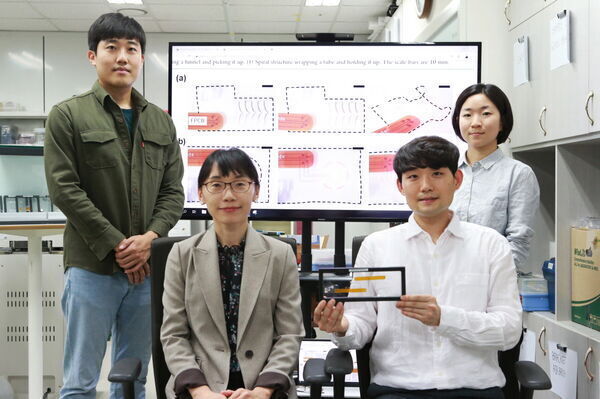
A Technology to Transform 2D Planes into 3D Soft and Flexible Structures by Engineering Adhesion between Thin-Films
"- DGIST Professor Sohee Kim’s Team developed a technology to produce 3D soft and flexible devices by blowing balloons made of polymeric thin films. - Can be made in various 3D shapes... Expected to have diverse medical and biomedical applications. DGIST announced that Professor Sohee Kim’s research team in the Department of Robotics Engineering succeeded in developing a technology to produce flexible 3D medical devices. It is expected to be used in developing various devices with embedded electrical functionality or soft robots. Professor Sohee Kim’s team developed a new technology for 3D device production that selectively bonds polymeric thin films using plasma. Since this technology can manufacture 3D flexible devices more easily than the existing methods, it is expected to have a positive impact on the future research." [...]
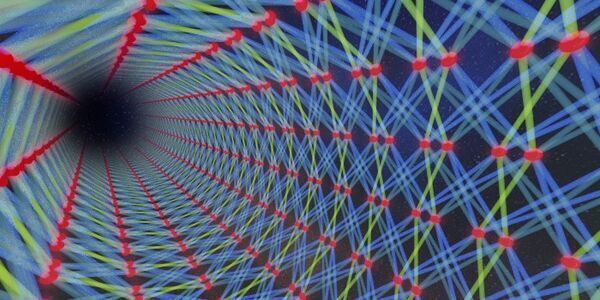
Blanket of light may give better quantum computers
"A ‘blanket’ of thousands of quantum-mechanically entangled light pulses has the potential to pave the way for more powerful quantum computers. Quantum mechanics is one of the most successful theories of natural science, and although its predictions are often counterintuitive, not a single experiment has been conducted to date of which the theory has not been able to give an adequate description. Along with colleagues at bigQ (Center for Macroscopic Quantum States - a Danish National Research Foundation Center of Excellence), center leader Prof. Ulrik Lund Andersen is working on understanding and utilizing macroscopic quantum effects: “The prevailing view among researchers is that quantum mechanics is a universally valid theory and therefore also applicable in the macroscopic day-to-day world we normally live in. This also means that it should be possible to observe quantum phenomena on a large scale, and this is precisely what we strive to do in the Danish National Research Foundation Center of Excellence bigQ,” says Ulrik Lund Andersen. In a new article in the prestigious international journal Science, the researchers describe how they have succeeded in creating entangled, squeezed light at room temperature. A discovery that could pave the way for less expensive and more powerful quantum computers." [...]

On “Quantum Supremacy”
"Quantum computers are starting to approach the limit of classical simulation and it is important that we continue to benchmark progress and to ask how difficult they are to simulate. This is a fascinating scientific question. Recent advances in quantum computing have resulted in two 53-qubit processors: one from our group in IBM and a device described by Google in a paper published in the journal Nature. In the paper, it is argued that their device reached “quantum supremacy” and that “a state-of-the-art supercomputer would require approximately 10,000 years to perform the equivalent task.” We argue that an ideal simulation of the same task can be performed on a classical system in 2.5 days and with far greater fidelity. This is in fact a conservative, worst-case estimate, and we expect that with additional refinements the classical cost of the simulation can be further reduced. Because the original meaning of the term “quantum supremacy,” as proposed by John Preskill in 2012, was to describe the point where quantum computers can do things that classical computers can’t, this threshold has not been met." [...]
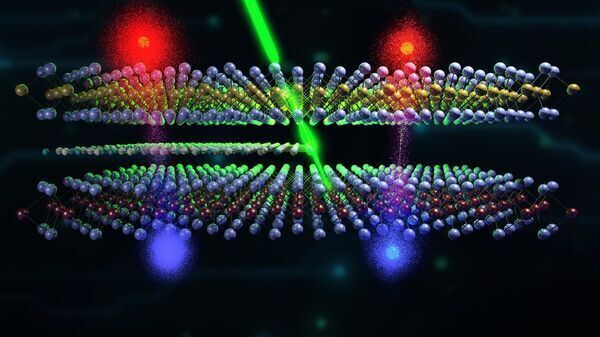
Excitons will shape the future of electronic devices
"Excitons are quasiparticles made from the excited state of electrons and – according to research being carried out EPFL – have the potential to boost the energy efficiency of our everyday devices. It’s a whole new way of thinking about electronics. Excitons – or quasiparticles formed when electrons absorb light – stand to revolutionize the building blocks of circuits. Scientists at EPFL have been studying their extraordinary properties in order to design more energy-efficient electronic systems, and have now found a way to better control excitons moving in semiconductors. Their findings appear today in Nature Nanotechnology. Quasiparticles are temporary phenomena resulting from the interaction between two particles within solid matter." [...]
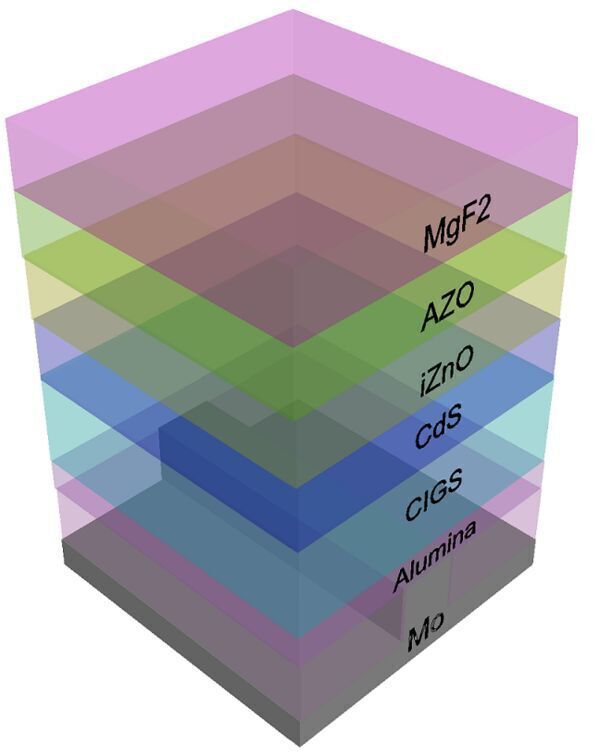
Big Improvements In Thin-Film Solar Cell Efficiency Now Possible
"Researchers at Penn State and Delaware have developed a theoretical method to improve the efficiency of thin-film solar cells by up to 33 percent. Flexible thin-film solar cells are needed to supply electrical power to fabrics, clothing, back packs and anywhere that a local autonomous power supply is required. Rooftop solar based on silicon has made solar energy cheap and readily available. But silicon is rigid and heavy, suitable for large-scale power production but not for portable power. Currently, flexible solar commands around 5 percent of the solar cell market. In order to increase the use of flexible solar it is important to increase the conversion efficiency from its current level of around 21 percent." [...]
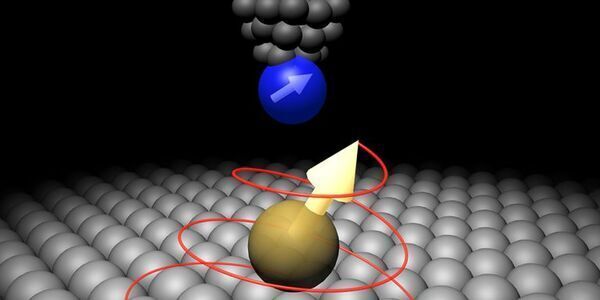
Building single-atom qubits under a microscope
"Our team at IBM Research made a breakthrough in controlling the quantum behavior of individual atoms, demonstrating a versatile new building block for quantum computation. In the paper “Coherent spin manipulation of individual atoms on a surface,” published today in the journal Science, our team demonstrated the use of single atoms as qubits for quantum information processing. Quantum bits, or qubits, are the fundamental building blocks of a quantum computer’s ability to process information. This is the first time a single-atom qubit has been achieved using a Scanning Tunneling Microscope (STM), the Nobel Prize-winning IBM invention that allows atoms to be viewed and moved individually. This is an important breakthrough because the STM can image and position each atomic qubit to precisely control the arrangement of nearby qubit atoms. The microscope works by scanning the ultra-sharp needle tip near a surface to sense the arrangement of individual atoms, and the needle tip can pull or carry atoms into desired arrangements." [...]
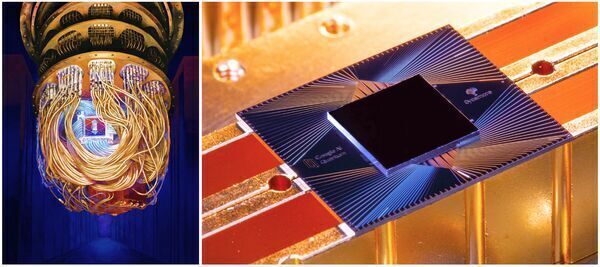
Quantum Supremacy Using a Programmable Superconducting Processor
"Physicists have been talking about the power of quantum computing for over 30 years, but the questions have always been: will it ever do something useful and is it worth investing in? For such large-scale endeavors it is good engineering practice to formulate decisive short-term goals that demonstrate whether the designs are going in the right direction. So, we devised an experiment as an important milestone to help answer these questions. This experiment, referred to as a quantum supremacy experiment, provided direction for our team to overcome the many technical challenges inherent in quantum systems engineering to make a computer that is both programmable and powerful. To test the total system performance we selected a sensitive computational benchmark that fails if just a single component of the computer is not good enough. Today we published the results of this quantum supremacy experiment in the Nature article, “Quantum Supremacy Using a Programmable Superconducting Processor”." [...]
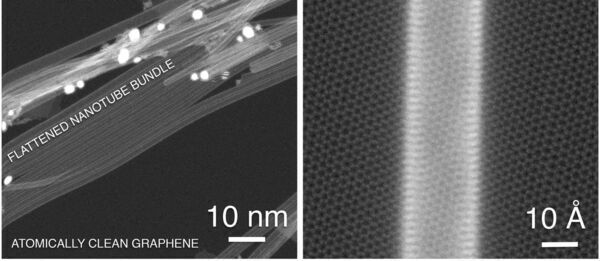
Graphene substrate improves the conductivity of carbon nanotube network
"Scientists at Aalto University, Finland, and the University of Vienna, Austria, have combined graphene and single-walled carbon nanotubes into a transparent hybrid material with conductivity higher than either component exhibits separately Transparent conductive films (TCFs) have many applications in touch screens, organic light emitting diodes and solar cells. These applications need materials that are strong, energy efficient and stable, which is why companies and researchers are interested in carbon-based materials. This applies especially to networks of single-walled carbon nanotubes, which are expected to replace the metal-oxide films that are currently used. Graphene is the thinnest imaginable material, it is just one atomic layer of carbon atoms. Rolling this into a cylinder makes a carbon nanotube, which is better suited to carrying electricity in real-world applications. In an article published in ACS Nano, scientists at Aalto University and the University of Vienna introduce a hybrid material made by combining carbon nanotubes and graphene, which improves the conductivity of the film beyond what is possible when using each of these component structures separately." [...]
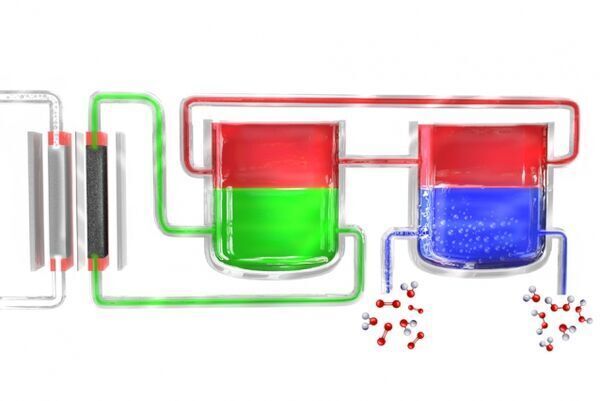
New process could make hydrogen peroxide available in remote places
"MIT-developed method may lead to portable devices for making the disinfectant on-site where it’s needed. Hydrogen peroxide, a useful all-purpose disinfectant, is found in most medicine cabinets in the developed world. But in remote villages in developing countries, where it could play an important role in health and sanitation, it can be hard to come by. Now, a process developed at MIT could lead to a simple, inexpensive, portable device that could produce hydrogen peroxide continuously from just air, water, and electricity, providing a way to sterilize wounds, food-preparation surfaces, and even water supplies. The new method is described this week in the journal Joule in a paper by MIT students Alexander Murray, Sahag Voskian, and Marcel Schreier and MIT professors T. Alan Hatton and Yogesh Surendranath. Even at low concentrations, hydrogen peroxide is an effective antibacterial agent, and after carrying out its sterilizing function it breaks down into plain water, in contrast to other agents such as chlorine that can leave unwanted byproducts from its production and use." [...]
Modelos 3D
Com a disponibilidade de ferramentas que permitem dar azo a nossa imaginação na criação de peças 3D e espaços como o thingiverse para as publicar, esta rubrica apresenta alguns modelos selecionados que poderão ser úteis.
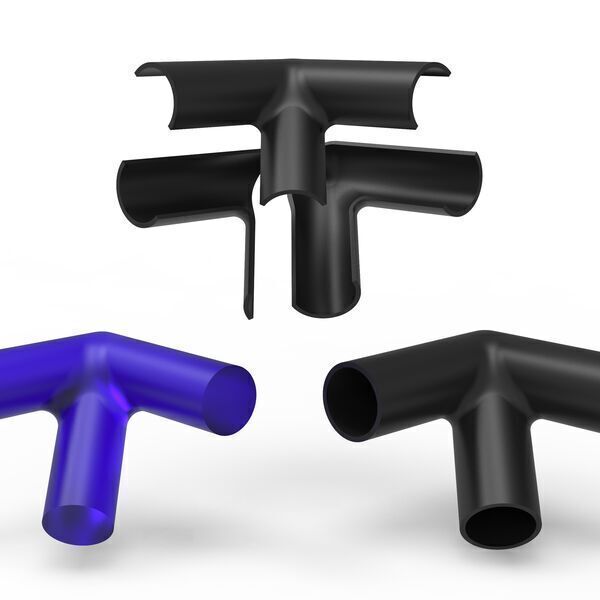
Geometer
"A Holistic Design Tool for Creating, Communicating and Manufacturing Advanced Human-Scale Forms for Design Pioneers and Producers Geometer is a new design tool and form language mediating between the physical and digital world. It is made to be understandable, communicable and dynamic. -No black box, encouraging active participation and goal oriented design. -Components open a channel for dialogue around relationships and patterns. -Built-in system that encourages strength and freedom of form without compromise. There are three components to this project: (1) A kit of robust physical and digital components with unique names and specific geometry which can be combined in a modular fashion." [...]
Documentação
A documentação é parte essencial do processo de aprendizagem e a Internet além de artigos interessantes de explorar também tem alguma documentação em formato PDF interessante de ler. Todos os links aqui apresentados são para conteúdo disponibilizado livremente pelo editor do livro.
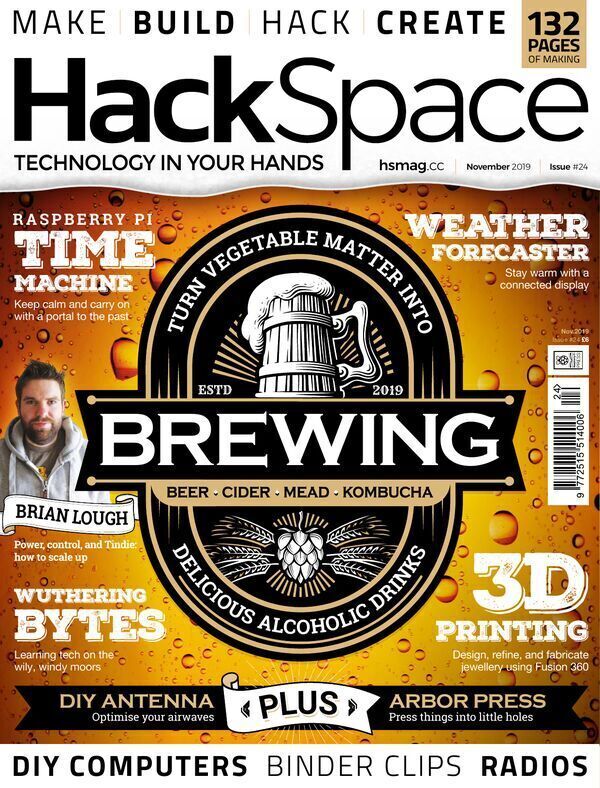
HackSpace magazine #24
"Learn how to use the ancient art of using yeast to turn sugar into delicious alcoholic (and non alcoholic) drinks. We look at DIY mead, cider, kombucha and beer - Make your own portable Raspberry Pi workstation - Display the weather forecast on your shelf - 3D print your own jewellery - Build a Raspberry Pi Time Machine" [...]
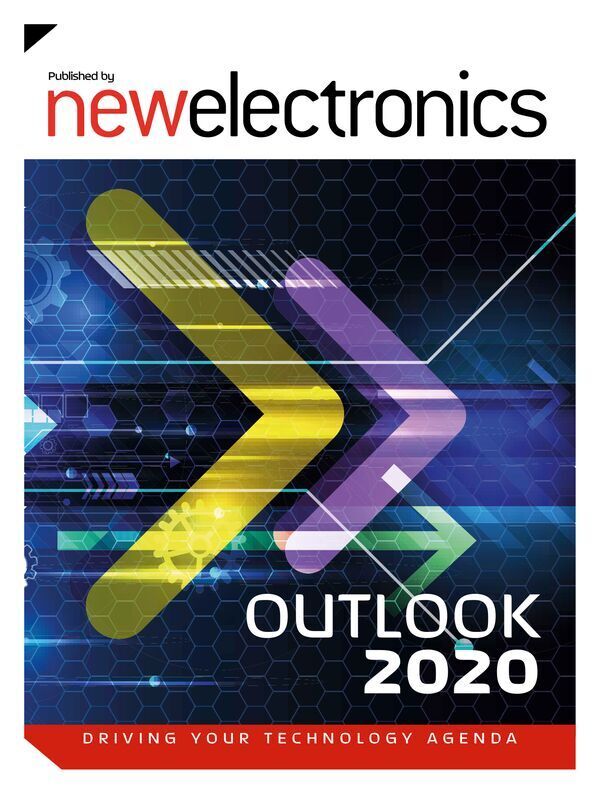
newelectronics 10 Outubro 2019
"New Electronics is a fortnightly magazine focusing on technological innovation, news and the latest developments in the electronics sector. Downloadable as a digital page turner or pdf file, or offered as a hard copy, the New Electronics magazine is available in a format to suit you. " [...]
Projetos Maker
Diversos Projetos interessantes.
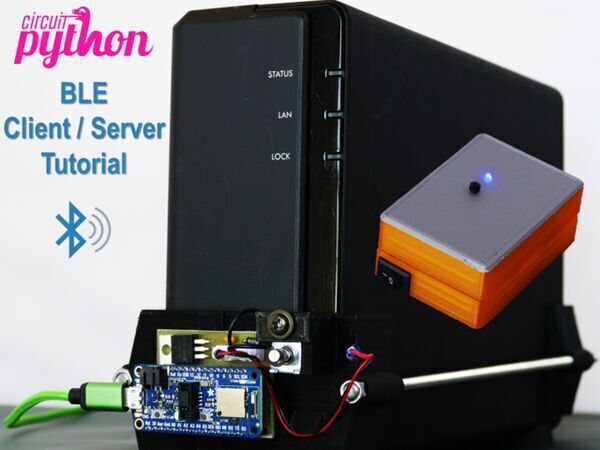
A CircuitPython BLE Remote Control On/Off Switch
"Make a remote control on/off switch for a computer with CircuitPython and BLE I have multiple computers around the house, and sometimes they need to be rebooted remotely. For example, here’s a surveillance camera server that’s located in a locked closet. Currently the only way to turn it on is by pressing the illuminated blue push button on the front of the case. Instead of running around the house, to manually reboot the computer, we will use CircuitPython to automate this process! The goal of this tutorial is to build a BLE peripheral that attaches to the front so the server can be turned on remotely from outside the closet. The peripheral will also wirelessly report whether the server is on or off." [...]
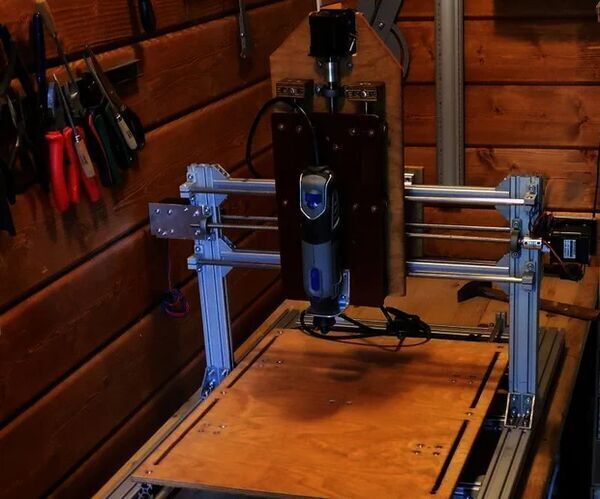
Design Self-made CNC in Fusion 360
"In this guidance we will run through the basics of the hand-made CNC machine design - we will cover basic topics of the Fusion 360 CAD software. Fusion360 defines your creativity in a way that you can create your own CNC design, change its parts or size anytime and experiment with different parameters like profiles or sliders sizes etc. When you are eventually satisfied with your creation then print BOM from Fusion360, order components and have fun with making your own CNC. Our primary target is a low-cost customizable CNC for all makers and developers. The possibilities are unlimited with the help of the CAD software" [...]
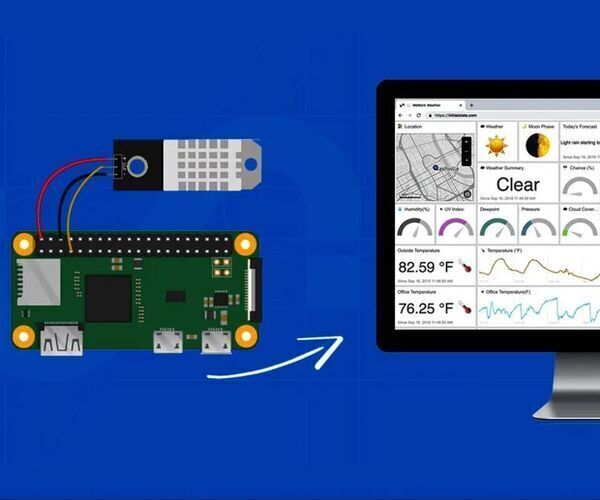
How to Build a Raspberry Pi Temperature Monitor
"Temperature and humidity are vital data points in todays industrial world. Monitoring environmental data for server rooms, commercial freezers, and production lines is necessary to keep things running smoothly. There are lots of solutions out there ranging from basic to complex and it can seem overwhelming on what your business needs and where to start. Well walk through how to monitor temperature with a Raspberry Pi and different temperature sensors you can use. This is a good place to start since these solutions are inexpensive, easy to do, and gives you a foundation to build off of for other environmental monitoring. Supplies: - Raspberry Pi (3, 4, or Zero WH) - Temperature Sensor (DHT2, DSB18B20, or Sense HAT) - 6" 40-Pin IDE Male to Female Extension Cable (Sense HAT Solution) - 10K Resistor, Breadboard, 40-Pin Breakout Board + Ribbon Cable, Wires (For DSB18B20 Solution)" [...]
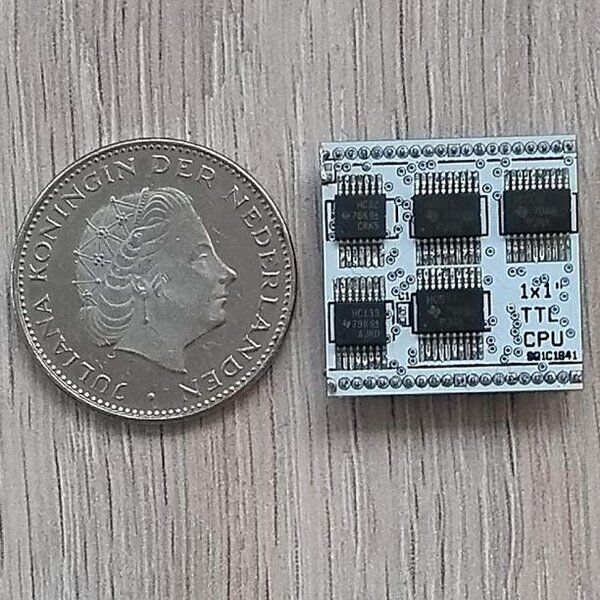
1 Square Inch TTL CPU
"A microprocessor built with TTL chips. In one square inch. What would be cool for the square inch contest or Hackaday prize.... How about a homebrew CPU with TTL chips ? This is the smallest TTL Homebrew CPU in the world ! Like the old CPU's of the eighties, it has 40 connections, an 8 bit databus, and 16 bit addressbus. But it also has some very unusual properties...." [...]
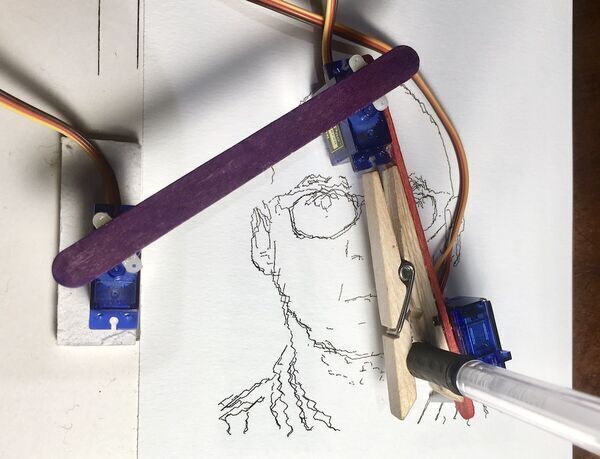
BrachioGraph - the cheapest, simplest possible pen-plotter
"BrachioGraph - arm-writer - is an easy-to-build pen-plotter, driven by a library of simple Python applications. Components and materials You’ll need: a Raspberry Pi, three servo motors, two arms and other small items mentioned below (such as a clothes-peg) depending on exactly how you build the machine. You’ll also need some strong adhesive. If you are using SG90 motors as suggested, arms of about 8cm are suitable for drawing an area approximately 16cm wide by 11cm high. This fits well onto a sheet of A5 paper. To help understand the relationship betweem arm geometry and the drawing area, this can be visualised using the script provided." [...]
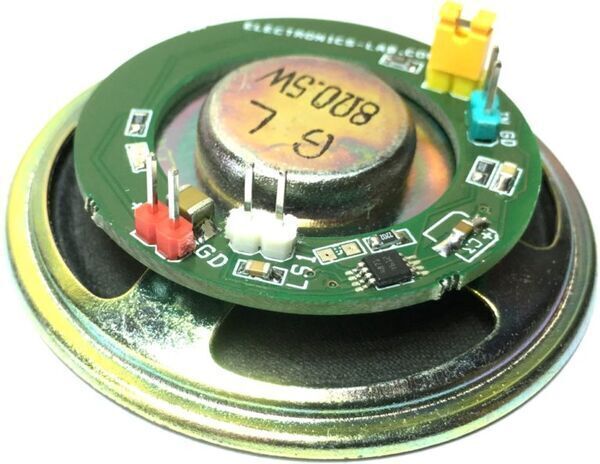
Mini Speaker Attached Audio Amplifier using TS4871
"This Mini Audio Power Amplifier is capable of delivering 1W of continuous RMS Output Power into 8 ohms load @ 5V. The Amplifier is built using TS4871 IC from ST. This Audio Amplifier is exhibiting 0.1% distortion level (THD) from a 5V supply for a Pout = 250mW RMS. An external standby mode control reduces the supply current to less than 10nA. An internal thermal shutdown protection is also provided. The amplifier has been designed for high quality audio applications such as mobile phones, media players and portable device." [...]

Bow Tie PCB Badge
"Every party is different, and everyone wants to be unique, what do you think about wearing a printed circuit board bow tie? PCB badges have always been an artistic form of circuit board.I this project I will be showing how I built this wearable Bow Tie PCB Badge. This project is open source. If you would like to build your own, all of the resources are available in the GitHub Supplies: - SMD LEDs - 1206 Package - 12 pieces - Slide Switch -11.6x4 mm - CR2032 Coin Cell - Coin Cell Holder - Brooch Base Holder Pins(This allows you to keep your badge on the Cloth.) - Tweezer - Soldering iron - Solder Wire - Wire Stripper & Cutter" [...]
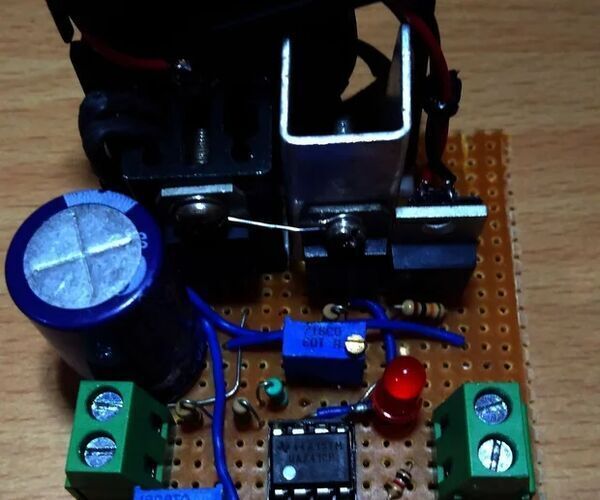
Linear Variable Voltage Regulator 1-20 V
"A linear voltage regulator maintains a constant voltage at output if the input voltage is greater than output while dissipating the difference in the voltage times the current watts of power as heat. You can even make a crude voltage regulator using a Zener diode, 78xx series regulators and some other complimentary components, but that won't be able to supply high currents like 2-3A. The overall efficiency of linear regulators is very less compared to switch mode supplies, buck, boost converters since it dissipates the unused energy as heat and has to be removed constantly other wise the regulator seizes. This power supply design is totally worth it if you don't have any power efficiency issues or if you are not powering a portable circuit from a battery. The whole circuit is made of three blocks, 1. Main variable regulator(1.9 - 20 V) 2. secondary regulator 3." [...]
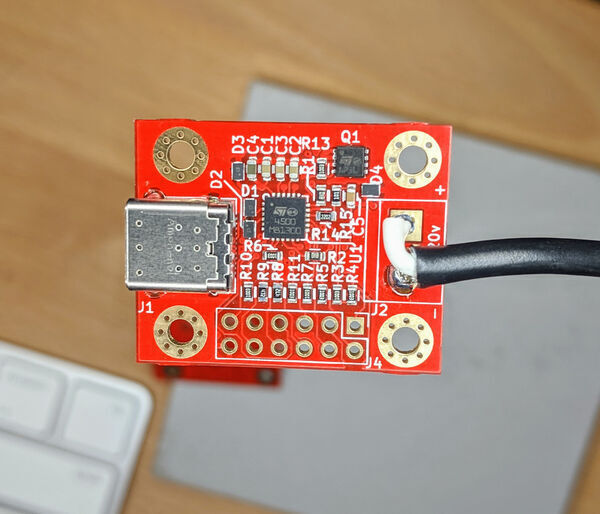
USB PD Stand-alone Sink Controller
"Since USB-C’s introduction, I’ve been consistently interested in leveraging it for powering everything under 100 watt (or rather under 90 watt, since it’s hard to come by a full 100 watt USB-C power brick). I finally found time to make the first move and this is the subject of the post. I wanted to keep it simple at the start. Chips like the popular FUSB302 which only provide the wire level handling of the USB-PD protocol, require a lot of software work to make them reliably operational. And that software will need to run on a µC which adds to BOM. So I went to search and found a gem called STUSB4500 from STMicroelectronics." [...]
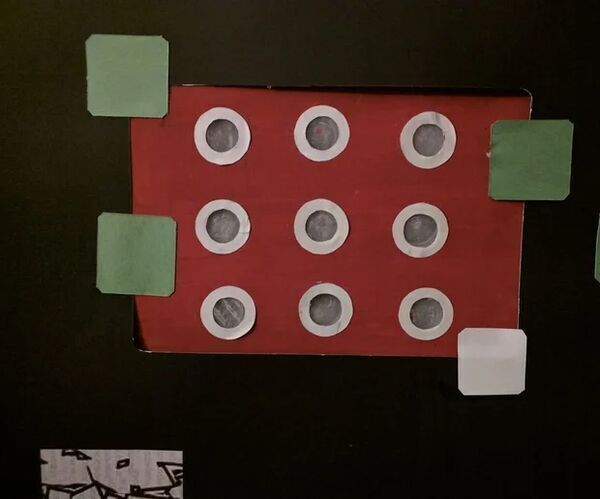
TicTacToe Hardware Implementation Using RaspberryPi
"This project aims at building an interactive TicTacToe model using two different colored LEDs denoting the two players using a raspberry pi. The idea here was to implement this on a bigger scale in an alleyway - imagine a grid of 3x3 semi-globes (like ones shown above) stuck on the wall where pressing one initiates the game (and a specific colored LED turns on). This can be implemented in alleyways beside bars, pubs or any place where people have to line up and wait - hence making the zone an interactive area where people actually enjoy while they wait. Supplies: For the model - I used the items available to me: - Raspberry Pi 3 Model B+ with raspbian installed on the SD card - Momentary Push Buttons - 9x - LEDs - 9x Green, 9x Red - Breadboard - Wires - Female to Female, regular copper wires that usually come with dev kits -- 22 guage insulated copper wire" [...]
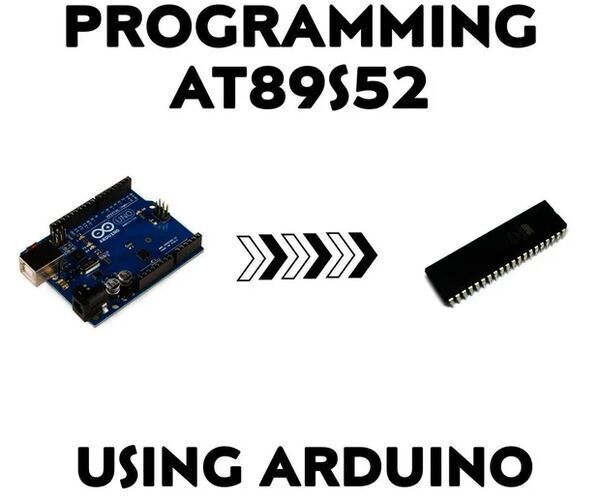
Programming At89S52 Using Arduino
"In-System Programming (ISP) aka In-Circuit Serial Programming (ICSP) is the ability of some programmable logic devices, microcontrollers, and other embedded devices to be programmed while installed in a complete system, rather than requiring the chip to be programmed prior to installing it into the system. In this tutorial the AT89S52 microcontroller is programmed by using Arduino as an In-Circuit Serial Programmer. Supplies: - 1x AT89S52 - 2x 33pF Disc Capacitors - 1x 11.0592MHz Crystal Oscillator - 1x 0.1uF Capacitor - 1x 10kOhm Resistor - 1x Push Button - 1x Bread Board - Jumper Wires - as Required" [...]
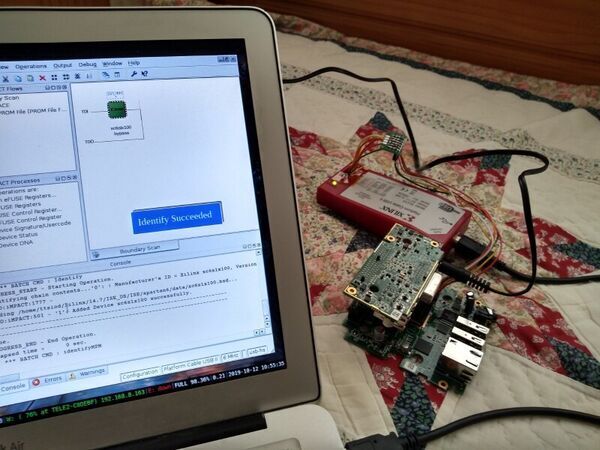
Compiling a CPU, in a cheap FPGA board
"I am developing a strange habit - I keep "twisting" products from failed companies... into nice toys. For science! :-) After completing my AtomicPI saga, something else caught my attention - a very cheap FPGA board, that came out of yet another failed company - the Pano Logic G2, Why not compile an open-source CPU inside this FPGA? And in fact, since this FPGA is quite big, why not make it a multi-core one? And then compile and run programs inside it - with an open-source cross-compiler, that uses an open-source real-time OS? The same OS that most European satellites and their instruments are using?" [...]
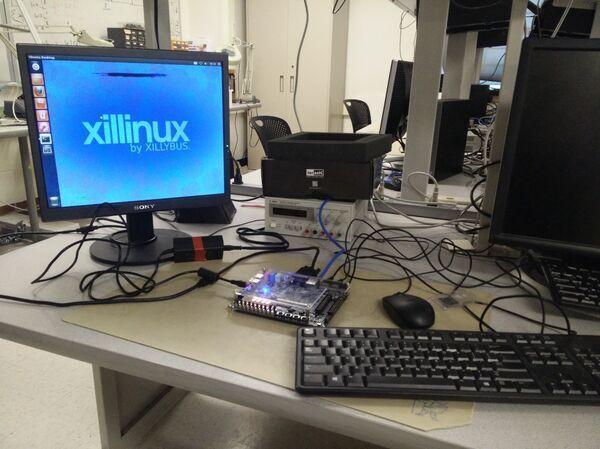
Logic Analyzer - HPS-powered Logic Analyzer debugging FPGA
"Abstract With increase in size of FPGA, the complexity of design implemented on FPGA is also increasing. In often cases, the design works fine on simulation but behaves differently on hardware. So, there arises a need to debug/monitor buses/signals on FPGA. This task is primarily accomplished by using state-of-the-art logic analyzer IP provided by FPGA vendor e.g. The SignalTap® II Embedded Logic Analyzer (ELA) from Altera and The Integrated Logic Analyzer (ILA) from Xilinx. Both are system-level debugging tool that captures and displays real-time signals in a FPGA design." [...]
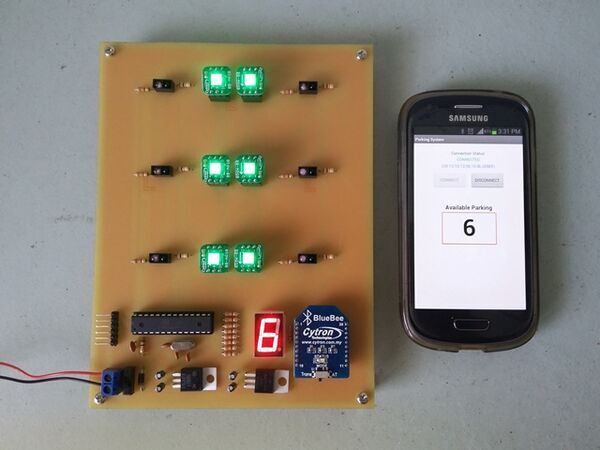
Android Project: Parking System
"he Parking System Project is a project that shows the number of empty parking lots. If there is no car in the parking lot, the LED will turn green and if there is a car in the parking lot, the LED will turn red. The number of empty cars will be displayed in seven segments and the Android App via bluetooth. " [...]
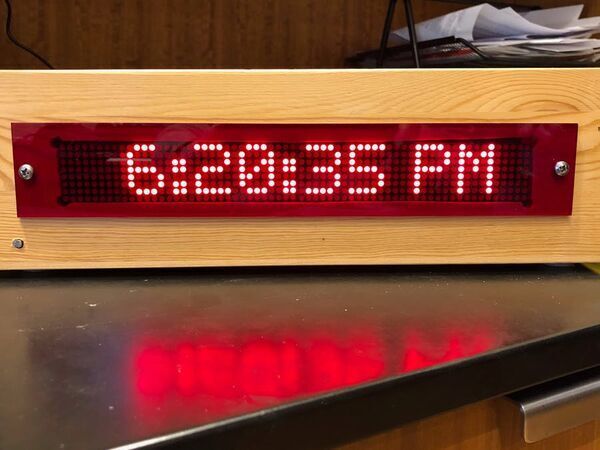
Chiming, Scrolling LED Matrix Clock
"Matrix clock with scrolling time, date, day of week, temp, humidity and event notifications. I wanted to build upon the clock logic I developed for the previous clock but put it into a more visible format. This clock is built into a repurposed vintage wine box and uses eight LED matrix units to display time, date, day of week, temperature, humidity and events that are either static (e.g., a birthday or Fourth of July) or floating (e.g., Memorial Day). The clock also offers a choice of silence or Westminster chimes or mantel clock bells. Finally, there's a built-in Easter egg that shows off what the matrix display can do (using the library functions) while play the theme to Game of Thrones. " [...]
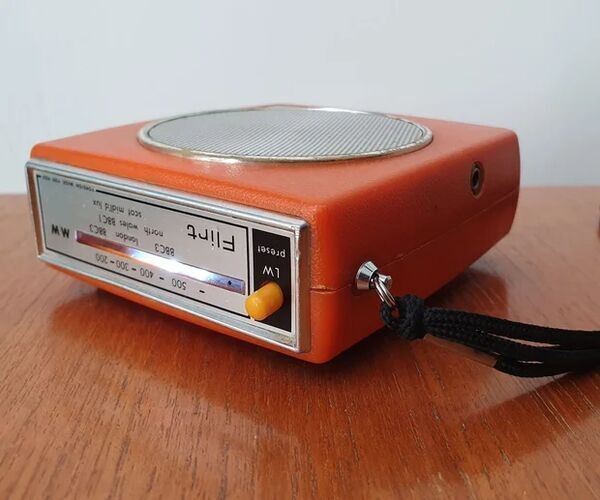
1970 Flirt Pi Internet Radio
"This beautiful little "Flirt" transistor radio from 1970 has had a loving conversion using a Raspberry Pi Zero and modern microswitches, and now bangs out internet radio tunes in the bathroom, its dial (and case) glowing brightly from the LEDs of the inbuilt Pimoroni Speaker pHAT's VU meter. It's powered by a rechargeable LiPo battery and all of the original controls have been re-used. The power switch does what you'd expect, boots up the Pi and points it at the stream for Soma FM's Secret Agent, while the original volume and tuning dials have been upgraded with microswitches and now control the volume. Pop open the battery cover and there's a micro-USB connector to charge up the battery - it's as cute and functional as it was 50 years ago! This was also my quickest ever Raspberry Pi project - from junk box to bathroom shelf in exactly a week. Supplies: - Flirt Transistor Radio - Raspberry Pi Zero W - Pimoroni Speaker pHAT - Adafruit Micro Lipo - Pimoroni Lipo Shim - 2x Lever Microswitches - 1x Latching Double Pole Double Throw Switch - Sugru - Jumper Cables - Small Speaker" [...]
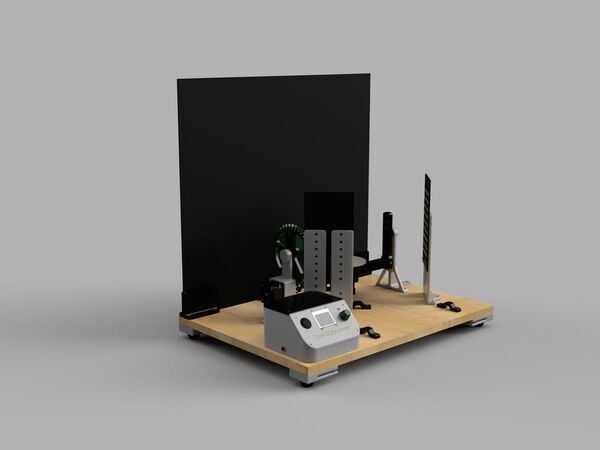
Open3DScanner
"Build your own open source photogrammetry 3D scanner which is based on your phone and an ESP32. Story I am a maker for quite some time now but this is my first really big project. I chose to develop an open source 3D scanner since I am somewhat interested in 3D scanning for some time now, but I had no access to an actual 3D scanner. This is the initial release of the Open3DScanner. An open source photogrammetry 3D Scanner which allows the creation of 3D scans with your smartphone. The core of the project is an ESP32 with custom firmware and a custom made PCB especially for this project." [...]
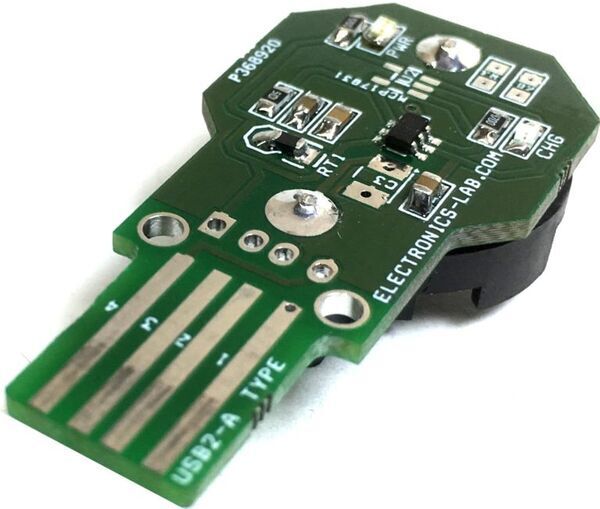
Lithium Coin Cell Charger for Rechargeable CR2016 CR2025 CR2032 Coin Batteries
"This versatile charger has been designed to charge Lithium Coin Cell Rechargeable CR2016/CR2025/CR2032 Coin Batteries. Just insert the battery to the holder, and plug in to any USB port to recharge, D3 Power LED, D1 LED indicates the charge cycle. The board has been designed to use dual chips, either BQ21040 IC from Texas instruments or MCP73831 from Microchip however the board is tested with BQ21040 IC. Programmable Charge Current using External Resistor up to 800 mA (default set to 50mA), follow formula bellow to set the desired current. An external resistor R2 is used to Program the Output Current (50 to 800 mA) and can be used as a current monitor. RISET = KISET / IOUT Where IOUT is the desired fast charge current; KISET is a gain factor found in the electrical specification (1) For greater accuracy at lower currents, part of the sense FET is disabled to give better resolution." [...]
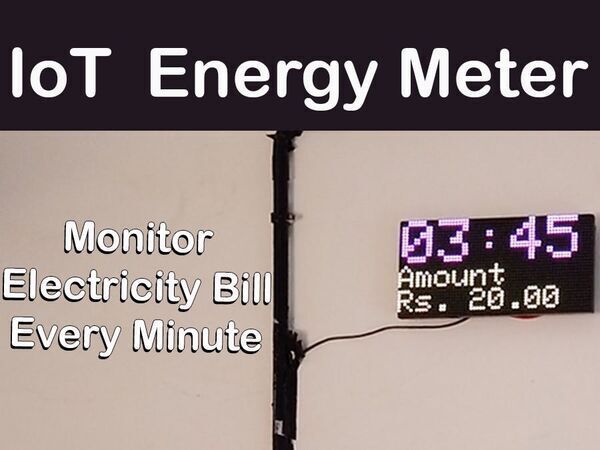
IoT Energy Meter
"Make your own smart energy meter that generates bill every minute which you can see on your smart phone or laptop You must have your traditional energy meters at home that generates bill every month, too boring. Now make your own smart energy meter that generates bill every minute which you can see on your smart phone or laptop Components Required - CT Sensor - NodeMCU - 220V AC – 5V DC Power supply - On – Off Switch - Terminal Connector" [...]
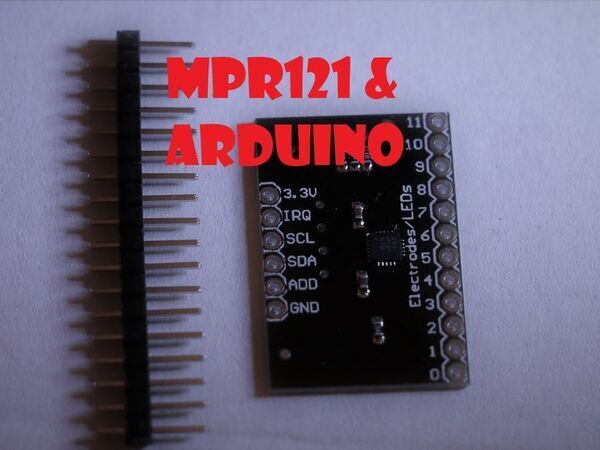
Turn (Almost) Any Surface Into a Touch button with MPR121
"Capacitance capabilities at the tip of your finger! MPR121 is a 12-pin touch sensor, using capacitance capabilities of the IC. There are 2 libraries for this IC, I personally prefer Using the bare conductive one. https://github.com/BareConductive/mpr121 The chip has a trigger pin, that allow you to know that one of the pins was either touched or released, giving you great response time and giving you option to use an interrupt instead of scanning the state in the loop – like showed in the example.The only down side it that you have only one trigger pin for all the 12 IO pins of the IC.The I2C address can be set ADDR is the I2C address select pin. By default, this is pulled down to ground with a 100K resistor, for an I2C address of 0x5A. You can also connect it to the 3Vo pin for an address of 0x5B, the SDA pin for 0x5C or SCL for address 0x5DThis setting is for the adafruit boards, some of the clone boards haved ifferent I2C address sets and defaults." [...]
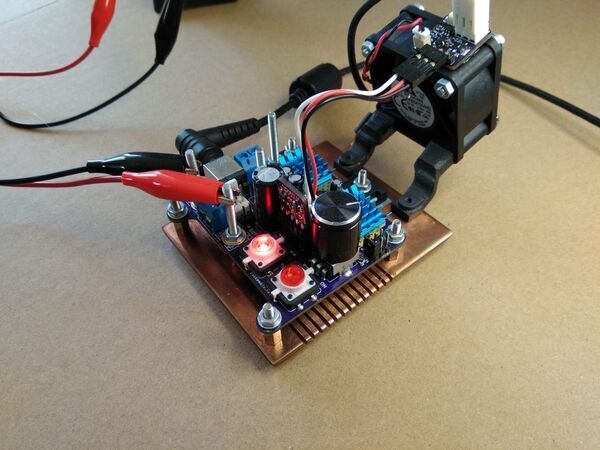
Temperature Controlled FAN using ATtiny10
"The electrons movement in electronic components lead to the generation of heat which when beyond certain thresholds, prevents some components from functioning properly and in others could lead to a catastrophic breakdown. For this reason, the topics of ventilation, overheating, and cooling are important discussions in the design of any device. Several cooling solutions, including popular ones like; the use of aluminum heat sinks, and fans/heat extractor can be adopted for a project but the ultimate choice usually depends on the amount of heat produced and the maximum level the components can withstand. Heat extractors/fans are used in devices like Laptop computers and similar in which the amount of heat being generated could get really high. To save power and reduce noise levels, the fans are deployed in a feedback-based system such that the they only come on when certain heat threshold is attained and goes back off when heat levels are back to normal. For today’s tutorial, we will examine how a DIY version of this temperature-controlled fan can be built and deployed in your electronics project." [...]
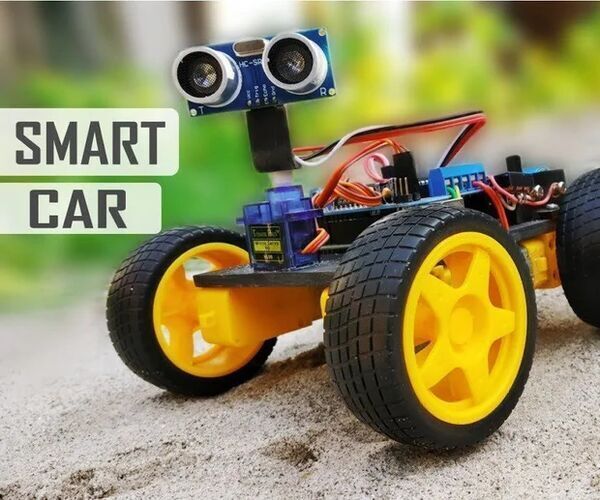
DIY Arduino Obstacle Avoiding Car at Home
"In this article i am going to show you how to make an Arduino Obstacle Avoiding car at home. Here's the Parts List: (Banggood.com) 1) Arduino Uno 2) Motor Driver Shield 3) Wheels (4x) 4) TT Gear Motor (4x) 5) Servo Motor 6) Ultrasonic Sensor 6) 18650 Li-on Battery (2x) 7) 18650 Battery Holder 8) Male and Female Jumper wire 9) Acrylic Sheet 10) DC Power Switch" [...]
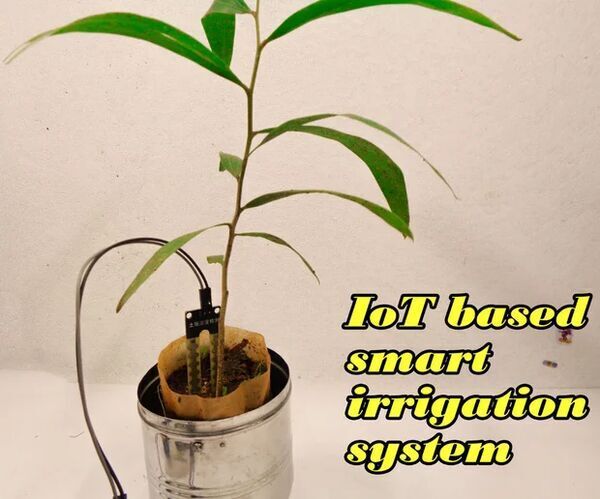
IoT Based Smart Irrigation System Using Soil Moisture Sensor and ESP8266 NodeMCU
"The Smart irrigation System has wide scope to automate the complete irrigation system. Here we are building a IoT based Irrigation System using ESP8266 NodeMCU Module and DHT11 Sensor. It will not only automatically irrigate the water based on the moisture level in the soil but also send the Data to ThingSpeak Server to keep track of the land condition. The System will consist a water pump which will be used to sprinkle water on the land depending upon the land environmental condition such as Moisture, Temperature and Humidity. " [...]
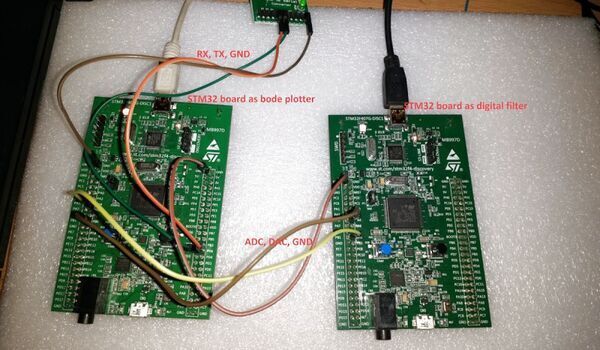
Bode Analyzer using STM32F407 Discovery board
"Frequency domain analysis is very important to know more about any system/ circuit or transfer function that we deal with. And the first thought comes to our mind about frequency domain analysis is "Bode plot". Bode plot is a combination plot of magnitude and phase difference of output vs. input of a cosine wave of single frequency, when it is applied to a circuit. Each of these cosine wave (signal) are applied once at a time and the frequency (in Hz or rad/sec) is increased in linear order (called chirp). All the while the amplitude of sine wave is kept constant (at say 1V_peak). While the frequency can be increased in small steps (1Hz/ sec), the time required to complete the entire frequency range can be quite big." [...]
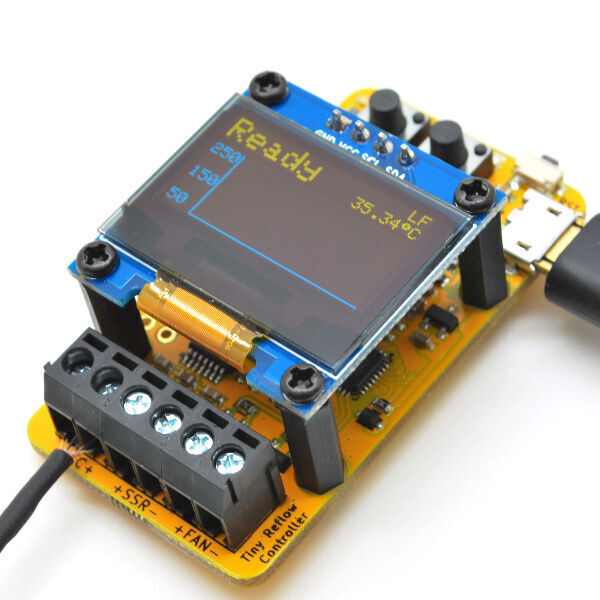
Tiny Reflow Controller with OLED display
"Last time we examined how to build a DIY Reflow Oven controller using the Tiny Reflow Oven Controller v1 by Rocket Stream. However, Rocket Stream recently released the Tiny Reflow Controller V2 and for today’s tutorial, we will attempt to build this second version. The Tiny Reflow controller v1 we discussed in the first article uses a LCD display and mostly SMD components and this kind of controller is required to control the heat process in reflow ovens to ensure the right amount of heat is supplied at all stages of the reflow process. The Tiny Reflow controller v2 unlike the v1, is based on the Atmega328p Microcontroller. It retains the MAX31856 thermocouple interface used in the v1 but comes with a USB-Serial interface chip to facilitate programming, and an OLED LCD instead of the 20×4 LCD display used on the v1. The OLED display ensures more information like the plot of the reflow curve can be provided as feedback to the users to give us a better understanding of the reflow process and state." [...]
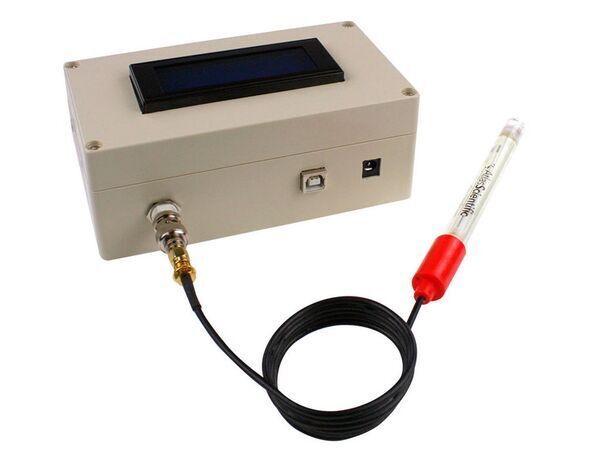
PHmeter – Arduino pH meter
"pH meters are scientific instruments used for measuring the activity and concentration of hydrogen-ions in water-based solutions, with the aim of indicating its acidity or alkalinity expressed as pH values. They find application in water & wastewater treatment, pharmaceuticals, chemicals & petrochemicals, food & beverages, mining, and agricultural processes to mention a few. For today’s tutorial, we will attempt to build an accurate, DIY version of this very useful tool. pH meters comprises of majorly a probe and a processing unit which interprets the data from the probe and displays in a human readable format. pHmeter essentially measures the difference in electrical potential between a pH electrode and a reference electrode. As a result of this, pH meters are sometimes referred to as a “potentiometric pH meters”." [...]
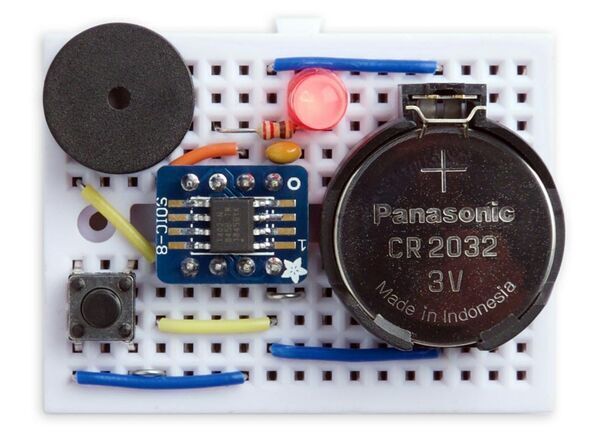
New ATtiny Low Power
"This article describes how to use the new 0-series and 1-series ATtiny microcontrollers in low-power projects, taking advantage of sleep mode to maximise the battery life and avoid the need for an on/off switch. The project is a simple 15-minute timer that flashes an LED once every 2 seconds while it is counting down, and then beeps a piezo buzzer when the time has expired. You could use it as the basis for an egg timer, a bath-overflow alarm, or any other fixed timer application. Introduction I thought it would be interesting to compare the low-power performance of the new 0-series ATtiny microcontrollers with my old favourite, the ATtiny85. One of my first projects based on the ATtiny85 was a simple 15-minute timer that took advantage of the low-power sleep mode to avoid the need for an on/off switch, and this has turned out to be one of my most popular articles: ATtiny Low Power. I thought it would be interesting to try and reproduce the project with one of the new 0-series ATtiny chips from Microchip, to compare the power consumption in the low-power sleep mode between the two devices." [...]
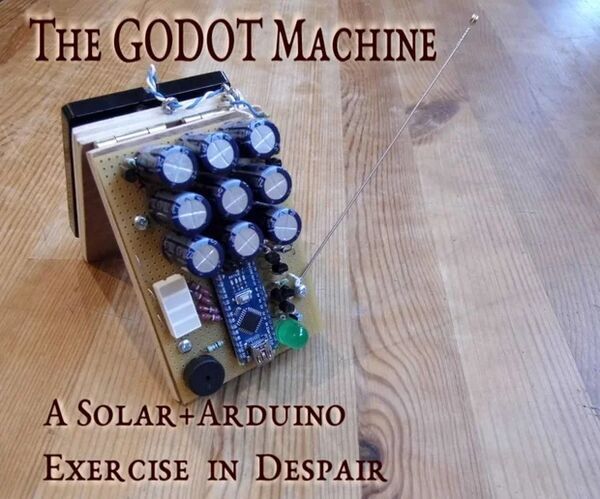
The Godot Machine
"What is a Godot Machine? It is part of the human experience that we can find ourselves in a state of waiting for something that might eventually happen after a long time of waiting, or not at all. The Godot Machine is a solar-powered piece of electro-"art" that tries to capture the desperate emotion that accompanies possibly pointless waiting. The name is from Samuel Beckett's famous play Waiting for Godot, in which two men wait for the coming of a certain Godot, who might arrive tomorrow, the day after, or never. So what does the Godot Machine do? 1." [...]
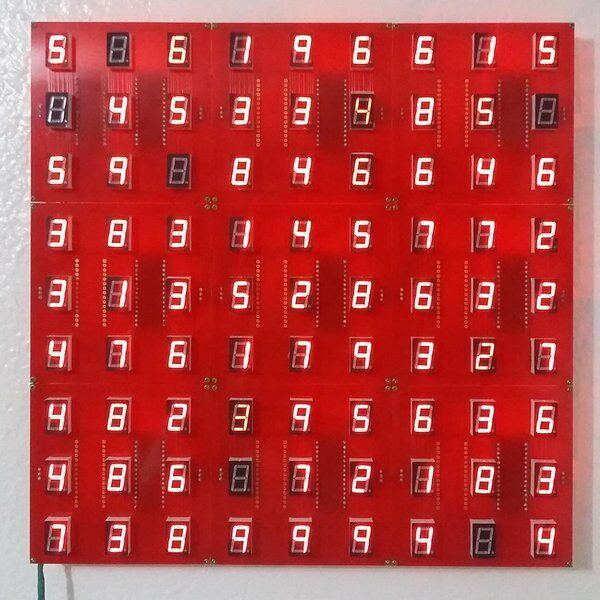
A Seven Segment Art Installation
"A modular board hosting 9 seven-segment displays that can be daisy chained to make an art installation A 100x100mm board is the basis for this project, a large installation of animated seven segment displays. Each board has an Arduino Nano and 9 Seven-Segment Displays. The Boards are daisy chained through three-pin headers on the sides. The pins carry power, ground and a serial port signal. The first board on the chain has two Arduino Nanos. The first one sends the instructions on which digits to light up, the second one drives the displays and relays the instructions to the next board down the chain." [...]
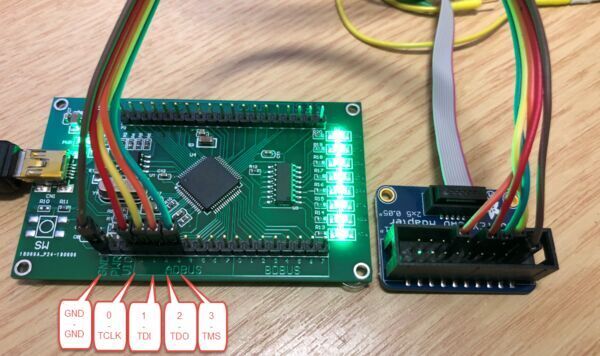
JTAG Debugging the ESP32 with FT2232 and OpenOCD
"In “Eclipse JTAG Debugging the ESP32 with a SEGGER J-Link” I used a SEGGER J-Link to debug an ESP32 device with JTAG. I looked at using one of the FTDI FT2232HL development boards which are supported by OpenOCD. The FT2232HL is dual high-speed USB to UART/FIFO device, and similar FTDI devices are used on many boards as UART to USB converters. With OpenOCD these devices can be turned into inexpensive JTAG debug probes. This article shows how to use a $10 FTDI board as JTAG interface to program and debug the Espressif ESP32. We are using the TTGO ESP32 module (Espressif Pico D4) Wi-Fi module on the lab robot." [...]
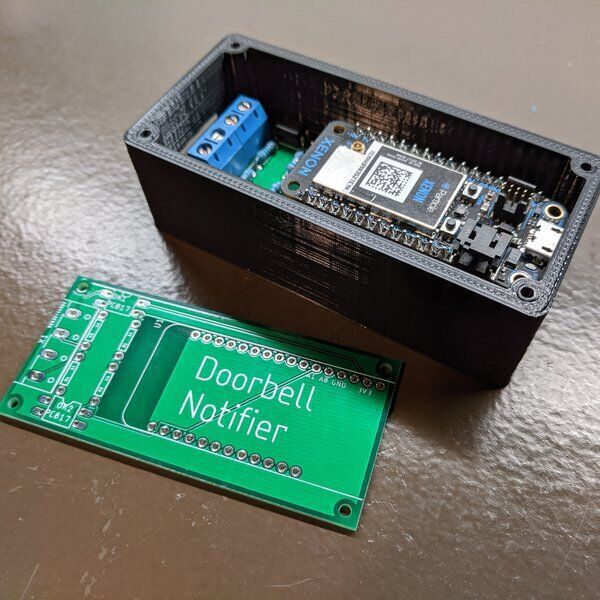
Doorbell Notifier
"Convert your existing wired doorbell into a smart doorbell, allowing for notifications, integrations, etc. One of the first projects I tackled after getting back into microcontrollers was converting my wired doorbell into a smart doorbell. I wanted to simultaneously trigger the appropriate camera to record on a doorbell press (even if I was home) notify me on my phone (in case I wasnt home) and blink all of the smart lights in my house (if I was listening to music, etc.). Originally, I used Stringify to achieve this integration beautifully (it is now defunct) but have since moved to IFTTT which has allowed me to do most of the same things. I constrained myself to make no permanent changes to my existing doorbell setup: I both wanted to leave everything intact so as to annoy my wife minimally but still allow for the integration I wanted. Homemade optocouplers proved to work splendidly for reading the doorbell states and I was ultimately able to give the entire project a polished and professional look while making it suitable for a wealth of other microcontrollers." [...]
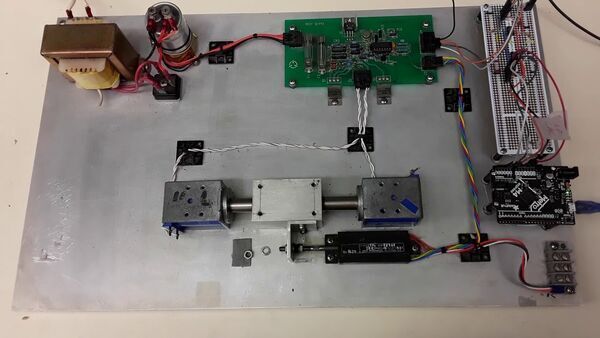
How to build a Linear Actuator powered by Solenoids and controlled by an Adafruit Metro M4
"This website describes how to build your own linear actuator or motor using a pair of solenoid valves and an Arduino microcontroller. The linear actuator I am describing was built at NJIT in 1994 by a Master's student named Alex Rokhvarg under the direction of Dr. Bernard Friedland. My Master's project was to retrofit the controller for this apparatus. I used the Adafruit Metro M4 as the new controller. Here is a video demonstrating the linear actuator. " [...]

Automatic Door Lock Using Arduino and IR Sensors
"Hello guys, welcome to another instructable. Have you ever wondered how the automatic doors in malls or offices work?? Well they consist of sensor mechanisms that senses the presence of humans and sends the signal to the control board which decides if the door has to open or remain closed. Today we will make a similar project using an Arduino Uno and IR sensors. Let's get started !!! " [...]
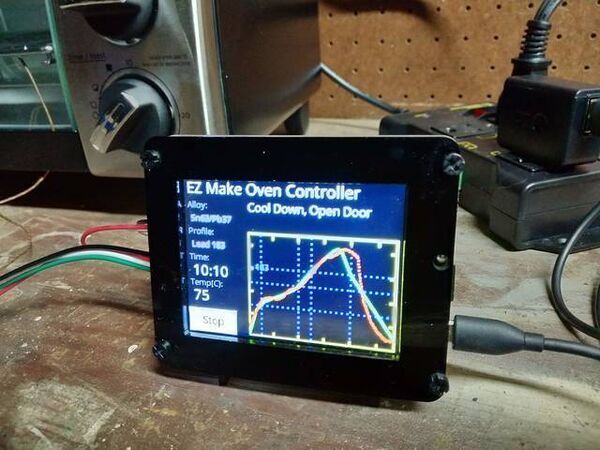
EZ Make Oven
"Soldering through hole components onto printed circuit boards (PCBs) is a very useful skill to have and needed for many DIY projects. However, there are some components that do not have through hole versions and are only available as surface mount versions. Or, a project may need a smaller footprint using smaller components. In these cases, you will need to put aside your solder iron and use a reflow oven. A reflow oven is used for soldering of surface mount electronic components onto PCBs. In the past, reflow ovens were large, expensive and limited to commercial units." [...]
Pumpkin Pi Trick-or-Treat Tracker
"Make a trick-or-treat tracker with a fake pumpkin and a Raspberry Pi WH that lights up! Looking for a quick Halloween project that's useful in more ways than one? Want to put that Pi Zero WH to good use? Feel like using data to determine how much candy you'll need for next year? Get ready to build the Pumpkin Pi Trick-or-Treat Tracker! Doubling as decoration and a people tracker, this Pi-in-a-Pumpkin changes color and streams when motion is detected." [...]

Day to Night-Light Skirt
"One of the most amazing things about LEDs is that they give you endless options when it comes to color and lighting effects. Adding lights to an ordinary piece of clothing lends that garment transformative, chameleon-like powers. I believe illuminated clothing need not be relegated to the realm of costumes and raves, when used judiciously, lights can be a beautiful design element in everyday garments. In designing this Day-to-Night Light Skirt I wanted to find a simple way to use LEDs to create something that could go from a normal piece of clothing to a festive show stopper at the touch of a button. Wear it to a classy early evening event with the lights off, and no one will be the wiser... turn the lights on when you head to a dance party later... or maybe start your own party by transforming into a fabulous light show right before the astonished eyes of your unwitting companions. By using a pre-programmed LED chip from Cool Neon that can be controlled by remote, I avoided the need for arduino coding, making this project quite a simple one." [...]
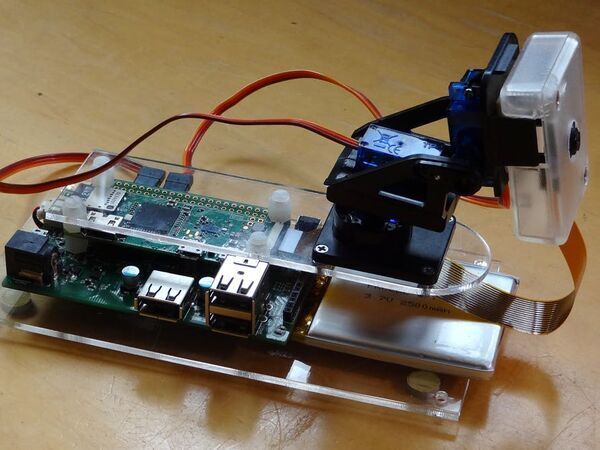
Webcam with Pan/Tilt Servos and Battery Backup
"Extending motionEyeOS on a Pi Zero to support pan/tilt servos, battery backup and an on-screen status display. Calin Crisan's excellent motionEyeOS is a complete Linux distribution that turns the Raspberry Pi Zero into a highly functional wireless webcam. He provides detailed instructions for installation and configuration; some are referenced here. These instructions show how to use a gadget I designed called the Solar Pi Platter with a Pi Zero W to extend the capability of motionEyeOS with battery backup, pan/tilt servos and a status information display. Installation is simple using the extension capabilities built-in to the motionEyeOS distribution. The pan/tilt controls as well as a status display showing battery and charging conditions show up in the web interface." [...]
That's all Folks!



